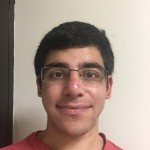
Youssef Tobah
University of Texas, Austin
Electrical & Computer Engineering
Expected Graduation: May 2018
Host Lab in Japan: Otsuji Lab, Tohoku University
Research Project Abstract and Poster: Terahertz Emission and Detection in Graphene Based Heterostructures ![]()
2016 Colloquium Winners | Smalley-Curl Institute
Youssef Tobah awarded the Lake Shore Cryotronic Award in the Undergraduate Poster Presentation Session.
Why Nakatani RIES?
The Nakatani RIES program is a dream combination of my two greatest passions: electrical engineering and Japanese culture. Over the summer I will have the chance to perform in depth research that seeks to expand the boundaries of electrical engineering, all while immersing myself in a culture I have been fascinated with for years. The research experience will give me a deeper understanding of my undergraduate specialization and prepare me for performing research in graduate school, helping me better understand what sort of work research entails and exactly what type of research I would like to pursue. In addition to benefiting my engineering interests, I am extremely excited to learn more about Japan both by visiting famous cultural sites and meeting the country’s people. I hope to further my understanding of the culture in a way that could only be achieved through a long term stay and the forming of bonds with that culture’s people.
Together, the exposure to technological research and Japanese culture provides students an international research experience that is becoming increasingly relevant in our globalizing world. With countries working together to share and build on each others advancements, it is important for students to understand what skills are required for international research. The Nakatani RIES Fellowship shows why working through language and cultural barriers can certainly be challenging, but always rewarding enough to work through those challenges. Moreover, it provides students with the skills needed to successfully realize the benefits of international research. I hope to gain this set skills and form new friendships during my first visit to a country I have always longed to go to.
Goals for the Summer
- Gain a deeper understanding of the research process and electrical engineering
- Learn what aspects of Japanese perspectives towards research, science, engineering and problem solving are unique
- Make friends with those I meet through the program and in Japan
- Learn enough Japanese to comfortably hold a conversation
- Explore many different sites and landmarks
Meaning of Nakatani RIES: Post-Program
I certainly still agree with what I wrote about what the program meant to me before it began, but now I better understand what makes the program special. I hope to visit Japan in the future, but I do not think it would be possible to get the same experience I got this summer. I wrote earlier that I would get to learn about Japanese culture, but I did not realize how important and helpful the context from the Pre-Departure and Tokyo Orientations would be. It was thanks to these that I knew what kind of observations to make and what aspects of Japanese society focus on and study. The information we got greatly enriched the experience compared to a solo visit to Japan without any of this context. The other point I would like to add is the friendship I made with the other Nakatani students and my lab mates. I briefly mentioned making friends in the original report, but I did not think it would be as important to me as it is now. There might be other opportunities to do research and visit Japan—and possibly to do research in Japan—but I can only hope that I can meet people as great as those I met this summer.
Research Internship Overview
For my research project, I studied terahertz emission and detection in graphene based devices. It is currently difficult for today’s technology to achieve high power terahertz emission or sensitive detection, but graphene is a material that can act as both an emitter and detector of terahertz. We analyzed graphene based transistors, working toward terahertz emission and detection. I am majoring in electrical engineering and this research project certainly falls within that field. While not too closely related to my specializations of embedded systems and integrated circuits, I learned about some fundamental topics, such as semiconductor physics, which I will be required to study as an electrical engineering student and may come into play in future work in the field. Working in an international research setting fun and informative since I was able to learn a lot about Japanese research and culture, and even a little bit about Indian culture. I also explained some aspects of American culture to my lab mates. Because of this experience, I am more strongly considering pursuing research in the future. I felt how exciting it can be to work at the frontier of electrical engineering and produce new results the world had never seen before.
My lab environment was very friendly and sociable. Lab mates openly talked with each other throughout the day about research or unrelated topics, and the professor himself was also kind and friendly to his students and vice versa. My mentor was helpful in making sure I always had something to do and explaining difficult concepts that were important for the experiments. Outside the lab I took several trips with my lab mates to a robotics competition, Fukushima, and Yamadera, and had a great time during every trip.
Daily Life in Japan
Daily life varied between the different phases of the program. In Tokyo I went to Japanese class, back to Sanuki for the planned lecture or activity, and then to the various districts of Tokyo I had been interested in visiting. These included Ikebukuro, Akihabara, Shibuya, and Shinjuku. At that point I usually went with other Nakatani students and counted on them to lead the way, but my first big accomplishment was getting back from Akihabara alone without GPS. At this phase of the program I decided to try traveling on my own without asking for directions, which was rewarding when I eventually made it to where I was going, but did take a lot more time than it needed to. Besides the Nakatani students, my daily interactions came from KIP students or konbini clerks. In Sendai came the next phase of daily life. Here, I rode my bike to and from lab every day, and occasionally spoke with the Urban Castle front desk. The communication here was my biggest challenge in daily life until I found out some of the staff spoke English, and I just needed to wait for them to be present before asking any questions. During the weekends I took many trips to different places all over Japan. At this point I discovered how much time I can save by frequently asking for directions. I also used GPS, but asking for help made things so much smoother. I also mastered the technique of catching last-minute trains.
My favorite experience in Japan …. was making it to the top of Mount Fuji. It was a very difficult climb, but the view was absolutely worth it. The climb itself was also fun, with amazing views of the stars and the town below, even though it was so tiring. Some other great experiences were visiting Lake Ashi in Hakone, being inside a cloud on Mount Zao, visiting the Ghibli Museum, and the concert in Makuhari Messe. There was also one day I particularly enjoyed where a group of us explored Shibuya and Ikebukuro.
Before I left for Japan … I wish I had planned my sightseeing schedule a little more thoroughly. Since I had to do a lot of planning while I was there, a couple open days went by without any special plans, and there were a few places on my list I did not get to see. If I had a schedule ahead of time, I may have been able to visit those places on those empty days.
While I was in Japan …. I wish I had sent my schedule to the rest of the group early. I made many plans at the last minute, and assumed no one would want to tag along and decide to visit faraway places with only a few minutes notice. While I did fortunately enjoy many group trips, I could have potentially went on more trips with the other students if I was able to let them know where I was going ahead of time.
Excerpts from Youssef’s Weekly Reports
- Week 01: Arrival in Japan
- Week 02: Trip to Akita
- Week 03: Noticing Similarities, Noticing Differences
- Week 04: First Week at Research Lab
- Week 05: Critical Incident Analysis – Life in Japan
- Week 06: Preparation for Mid-Program Meeting
- Week 07: Overview of Mid-Program Meeting & Research Host Lab Visit
- Week 08: Research in Japan vs. Research in the U.S.
- Week 09: Reflections on Japanese Language Learning
- Week 10: Interview with a Japanese Researcher
- Week 11: Critical Incident Analysis – In the Lab
- Week 12: Final Week at Research Lab
- Week 13: Final Report
- Tips for Future Participants
Week 01: Arrival in Japan
I have been super excited to finally arrive in a country I have been longing to visit for years. I do not think I have experienced much culture shock, as I feel that my numerous trips to Egypt have prepared me for environments completely different than that of the US. I do look forward, however, to understanding both the obvious and subtle differences between Japan and the US. For example, one interesting difference is that I have spent time in big cities like Cairo and Austin, but there it is impossible to get away from noise. Even in one’s own home (at least in Cairo) sounds of people and traffic persist long through the night. While Tokyo is also big and busy, looking out the Sanuki Club window is still somehow peaceful; as if people try to keep quiet out of respect to other strangers. So far, the only aspect that I needed time to get used to was the amount of (or rather, lack of) free space. Whether its restrooms, restaurants, or subway stations, I do not think I have seen architecture quite as space efficient as that of Japan.
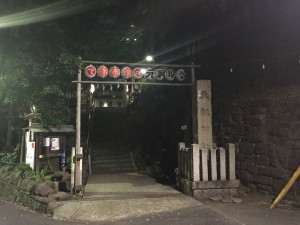
Certain aspects of the culture have closely met what I expected, while others surprised me. So far, the people I have met and seen in Japan seem to be as respectful and polite to each other as I thought they would be. Restaurant employees have been kind and patient with us as we seem to take up more space and make more noise than usual guests, and not once have we been told to be quiet or move out of the way when we traveled as a large (loud) pack in the subway or on sidewalks. However, I also expected Tokyo citizens to tightly follow even loose rules and laws, but noticed quite a few jaywalkers and even some graffiti in one spot around Azabu-juban. Interestingly, we are also always told to always take our valuables with us when we left our backpacks behind for various activities. From my understanding, Japan is a very safe place, where our belongings would not likely be stolen, but I had thought that because this is the case, people would not be so careful about potential theft.
The first week of classes has been useful for helping us get around on our own and interacting with Japanese speakers around Tokyo. While the classes are long and we learn a lot each class, I feel that we will need to make a big effort outside of class if we really want to become fluent. I have been trying to use phrases I have learned at combinis and with the hotel staff, but I have also been asking many questions of the KIP students during our free time together. I have also found it helpful to learn Japanese from the other Nakatani students. It seems that we are each able to pick up different words and phrases from our own adventures in Tokyo and we can all learn Japanese even faster when we share that information.
During our first week in Tokyo, we had three main culture activities: the introductory Japanese culture lecture, a talk with the KIP students about the US election, and an outing to the Edo-Tokyo museum and sumo tournament. The first lecture took place the day after our arrival, and most of the information seemed to be a reiteration of what we had learned during the pre-departure orientation; specifically, that the Japanese never directly say no and that if we ever think we might have offended someone, we should always apologize. Both of these cultural aspects are rather different from American ideas of direct communication and refusing to accept unfair blame through an apology. It is crucial for all of us to be aware of these differences to ensure smooth communication with both strangers in Tokyo and with our professors and labmates. We were also told not to stare at strangers. While staring is also considered rude in the US, Packard-sensei told us stories of past students who almost started fights by staring at stranger subway passengers for too long. I am glad we received this warning early as I would be particularly inclined to curiously stare in this new environment of Tokyo.
Later in the week, we spent an evening discussing the American presidential race with the KIP students. I was surprised to see the amount of Japanese students closely invested in the election, sharing many of the same worries Americans share about this year’s race. However, while it seems obvious in hindsight, it is also interesting to note that the discussion focused mainly on issues that would directly affect Japan, while in the US, these topics are rarely brought up. Concentrating on what, in the US, seemed to be such a small part of each candidate’s campaign helped me better realize how much weight the race holds for so many people all over the world.
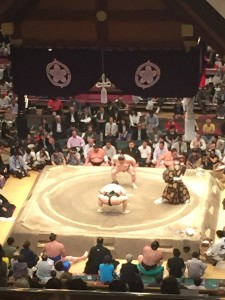
The last culture activity of the first week was visiting the Edo Tokyo Museum and watching the sumo match. I already had a deep interest in Japanese history, and the museum had certainly lived up to my high expectations. It felt great to spend a couple hours surrounded by a subject I unfortunately do not get much exposure to in the US. Sumo wrestling was also quite fun. At first it seemed rather slow-paced, as they would spend a good couple minutes on pre-fight rituals for matches that were only a few seconds long. However, after few fights, I came to appreciate the rituals and even found myself cheering for each match’s underdog with the other Nakatani students.
Question of the Week
Finally, my one question about Japanese culture is, would Japanese people find the larger living space of the US comfortable, or would that be seen as a waste of space?
Introduction to Science & Engineering Seminar
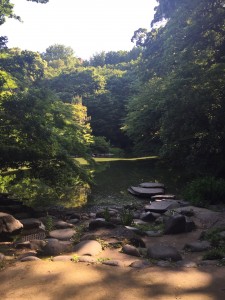
During the first week, we had the Introduction to Nanoscience Lecture and several tours of various Tokyo University Research Labs. The lecture gave a good overview of the main ideas behind several different nanoscience fields. I thought that the more basic explanations were the most helpful as they were easier to follow. From my electrical engineering classes, I was able to understand the general idea of each of Professor Kono’s points, but without any experience in quantum mechanics, it was difficult to understand all the details. I do think, however, this provided a good starting point to understanding the field of nanoscience. I also found the Tokyo University tour to be an exciting preview to working at a university lab. All of the research we saw was incredibly interesting, but as an electrical engineering major, I found the mechatronics lab to be the most fascinating. It was inspiring to see university students performing research that would go on to help others and better the world.
For my research project, I will be studying graphene based heterostructures. Graphene is a two-dimensional semiconductor with the special property of having no bandgap. For my research project, I will be specifically studying the quantum-mechanical and plasmonic properties of graphene, focusing on graphene’s reaction to infared and terahertz wave stimuli. I will optically pump graphene and use an optical probe to study its behavior. Graphene’s unique properties allow for extremely high electron mobility, allowing for the potential production of ultrafast transistors that can operate in the terahertz range.
Research Paper Summary
In 2015, my research lab published a paper titles “Vertical Hot-Electron Graphene-Base Transistors as Resonant Plasmonic Terahertz Detectors.” For this paper, they studied how hot-electron graphene-base transistors can detect terahertz radiation. Because of the nonlinear current voltage relations and potential for plasma oscillations, these transistors have the potential to be effective terahertz radiation detectors. The researchers used the “developed device model” to study the transistors. This modeled considered various electron propagation and electric potential properties of these transistors. They found that, because of the transistors’ nonlinear current-voltage characteristic, “small capture probability, and low collision frequency,” they can act as superior terahertz detectors compared to those made of traditional materials. These findings are significant, as they provide an improved terahertz detection technology. As electronic devices continue to get smaller and faster, it will be important for scientists and engineers to produce devices that can operate in the terahertz regime. Therefore, creating new methods for terahertz detection greatly benefits the nanotechnology field.
Week 02: Trip to Akita
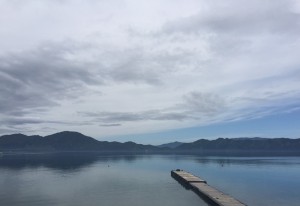
For our first weekend in Tokyo, we took a group trip to Akita along with many KIP students. This trip was an excellent chance to see the calmer, more peaceful side of Japan, as, until this trip, we have only been exposed to the much busier Tokyo. Our trip started in Hiraizumi, where our tour guide handed us a helpful map with notes on the area, all written by hand! I feel that the effort that he put into making that map for visitors to enjoy Hiraizumi to the fullest was an excellent example of the Japanese values of wa (harmony) and kata (form) that we learned about during the pre-departure orientation. After seeing many beautiful shrines (including one covered entirely in gold leaf!) we traveled to the ryokan. There, we got to try making mochi, relaxing in an onsen, and sleeping on tatami mats: all activities that I have been longing to try for years. The next morning we visited Lake Tazawa, where I was truly amazed by the lake’s beauty. The lake is certainly what had affected me the most during the weekend trip. While I have seen some beautiful sites before, I cannot recall ever traveling to a natural site just to enjoy the nature’s beauty. I greatly enjoyed the peaceful scenery of the wide lake surrounded by tall green hills. I focused more on the surrounding nature during the rest of the trip, and realized I prefer leave a more peaceful environment over big cities like Tokyo. I have spent time in large cities like Cairo, and suburbs in Virginia, but I was only able to realize my own personal preference due to the strong contrast between spending a full week exploring Tokyo, then immediately traveling to the distant countryside.
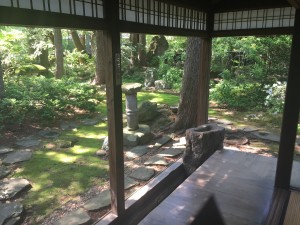
After leaving the lake, we stopped to have lunch at a botany museum with KIP students, Akita University students, and students from a local high school in Akita. Up to this point, I have been able to get around in Japan mostly using English. While I have been trying to use phrases I have learned from class and from others, the strangers I speak with usually end up responding in English which results in the rest of the conversation taking place in English. However, the high school students were both not too confident in their English abilities and extremely shy. During lunch I asked a few of the high school students to eat with me and another Nakatani student, and they politely agreed, but communication was difficult. This had been the hardest part of the Akita trip for me. I wanted to get to know them better and ask some questions about life in Akita and Japanese high school. However, I was not able to form comprehensible sentences, which resulted in a mostly quiet conversation. I realized that, while the KIP students had been taking English for many years and were very good at it, they were still making a big effort in the entirely English conversations we had in the past few days. I needed to make the same effort to both improve my Japanese and to not let any chances to meet new people go to waste. Japanese aside, I also felt a need to improve my own interpersonal skills, as a different Nakatani student had been communicating with the high schoolers just fine, and had come to Japan with a similar level of Japanese language skill as me.
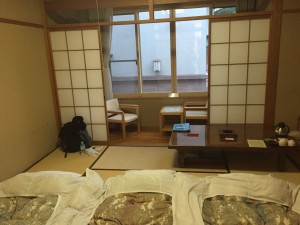
After lunch, we traveled to the students’ high school and attended a presentation and discussion about agriculture in Akita and whether agriculture (and general primary industry) should be included in high school education. Here, I was surprised to see many Japanese students state that they were against including primary industry education in high schools. Since the lecture had been pushing to see an increased interest in agriculture, I thought that the students would state opinions against primary education more indirectly. However, the first opinion at our discussion table was a clear opinion from a Japanese student that schools should not begin offering primary industry education. This seemed to go against the cultural values we learned of using indirect communication to preserve harmony and relationships. The next morning, we had a similar type of speech and discussion about declining interest in Akita and how to promote tourism in Akita for younger visitors. I had been a little worried going into both of these discussions, as I had not known anything about the topic beforehand, but both speakers presented in a way that made me really care about the topic, especially the ryokan president. He had been very friendly during our time at the hotel, and his speech motivated me, and everyone else at my table, to come up with good ideas for how to help Akita’s tourism. I feel that this amount of warmth and friendliness is perhaps something unique to a small, rural place like Akita.
Around noon we left the ryokan and visited Kakunodate, a well preserved samurai district. While it was certainly exciting to walk through samurai homes I have only seen in pictures and movies, I also noticed a great appreciation of nature built into the architecture. There were many large windows and doors looking out onto beautifully kept gardens. The largest home in the area even had a small pond and creek with fish swimming about. This all served as an excellent example of how wa had been present in traditional Japanese culture. After Kakunodate, we left for Akita station and took the shinkansen back to Tokyo.
Overall Akita was very different from Tokyo. The landscape and scenery was of course very different, as already discussed, but I also noticed a subtle difference between the two towns’ locals. While most everyone in Japan I have met has been very friendly, I felt that the locals of Akita were even friendlier, also already mentioned through the ryokan presidents’ kindness. It also seemed that the students of Akita were less concerned with fashion than the Tokyo students. While the many of Tokyo students seemed to wear trendier clothes, more makeup, and had dyed hair, I did not notice that in the Akita University students. Interestingly, both of these differences between city people and countryside people also exist in the U.S. I also noticed one cultural value that has been consistent in every Japanese person I have met so far: modesty. It is curious how many times the KIP students complain about their “bad English,” even though they are all very easy to talk to, and many of them are fluent. I have yet to meet a student in Japan, whether it is Akita or Tokyo that accepted a compliment about his or her English. The Japanese students’ language ability relates to a big takeaway from the Akita trip. I realized how truly valuable learning a country’s language can be when I tried to speak with the high school students, and I will continue to make an increased effort to learn the language during my trip. Additionally, Akita showed me how enjoyable some nature sites can be, and I have already made some last minute changes in my schedule to see more nature areas near Tokyo.
Week Two Overview
Our first cultural outing during week two was a visit to the National Museum of Nature and Science and the Tokyo National Museum, both in Ueno. I particular enjoyed seeing the Japanese scroll paintings and calligraphy, but it was also interesting to see that samurai armor and weapons were held as art. Even as they risked their lives in battle, the samurai took care to keep an elegant appearance and fought with beautifully crafted blades. After Ueno, we returned to Sanuki Club for a discussion with Japanese students about the boundaries of artificial intelligence (AI). It seemed that the Nakatani students were more involved during this discussion (likely because this is more of a technology focused topic) but the KIP students also seemed to be quieter compared to the previous one. I feel that this is related to the Japanese value of rikai (understanding) since they may not have been as willing to talk about a topic they did not have a complete understanding of. On a later day, I even spoke to a KIP student who did not attend the discussion, and he said he passed because he was not very familiar with AI. Contrastingly, several of the Nakatani students, including myself, did not know much about AI, yet we still shared our potentially incorrect ideas on the subject. Two days after this discussion, we all attended taiko practice, which was incredibly fun. It was also surprisingly tiring, and my arms even felt a little sore the next day.
The second week of classes continued smoothly. We learned more useful phrases related to transportation, but we also learned how to describe our own interests and families, which will hopefully be helpful for making introductions at the lab. On Thursday two classes, including mine, visited the AJALT office for a 50 minute conversation in Japanese. The AJALT instructors were extremely friendly and patient, but holding an entire conversation proved to be rather difficult. However, with some help, I was able to get several points across about my personal life and hometown. It felt good to use Japanese conversationally, but I was reminded once again that there is still much work to do to be able to comfortably hold a conversation entirely in Japanese.
Question of the Week
Do many Japanese people take visits to the countryside? Have many stayed at a ryokan or tried sleeping on tatami mats before, or do citizens of big cities like Tokyo usually not take trips to the rural parts of Japan?
Introduction to Science & Engineering Seminar
This week we had two lectures by Professor Stanton, one by Otsuji-sensei, and one by Ishioka-sensei. Professor Stanton’s first lecture provided an overview of quantum mechanics and how it can be used for electronics and optics. Understanding band theory and an electron’s energy states allows for the production of useful electrical devices, such as transistors. Additionally, solar cells and LEDs take advantage of using light to excite electrons, and using excited electrons to emit light. Otsuji-sensei’s lecture focused on the terahertz gap and the potential for graphene to operate in the terahertz range. Graphene would have a much higher mobility property than current semiconductors, allowing for ultrafast movement of electrons. Ishioka-sensei first discussed the position of female scientists and researchers in Japan, and then gave a lecture on lasers and optics. Japan currently has a relatively low ratio of female to male students in scientific fields. This leads to a very small number of woman working in scientific research positions in Japan. The technical portion of Ishioka-sensei’s lecture explained spectroscopy, the process of shining light at a material and analyzing how the light behaves as it passes through the material in order to study the material’s properties. She also specifically discussed ultrafast spectroscopy, which uses terahertz lasers, and how spectroscopy is particularly useful for analyzing graphene. Professor Stanton’s lecture reiterated many of the points Ishioka-sensei made, giving additional details about the spectroscopy process. During this week’s set of lectures, I found the topic of spectroscopy very interesting. I had not previously known that light and lasers could be so useful to analyzing electrical properties and building new electrical materials. It was also interesting to learn more details about how solar cells and LEDs function.
Week 03: Noticing Similarities, Noticing Differences
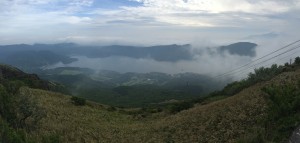
On the Japanese subway there are many rules most passengers seemed to naturally follow. The most easily noticeable one was to stay quiet. Unlike the more subtle public transportation practices, this rule was enforced by signs around stations and subway cars. Some signs simply said not to talk on the phone and to keep phones on silent. Yet, I was surprised to see that there were even signs asking headphone wearers not to play their music too loud so that no sound leaked from their headphones. It seemed that the subway was really meant to be a quiet place where tired passengers could at least relax a little bit during their commute. While, during the pre-departure orientation, we discussed how the Japanese tend to closely follow set rules, I did notice quite a few groups of Japanese people talking on subways. Yet, they always talked quietly, and it seemed that talking became more frequent during later hours when the cars became less crowded. However, with or without other talking passengers, the Nakatani students were always the loudest people in a car. We seemed to be lacking the consideration the other passengers possessed. Interestingly, on the ride from Enoshima to Kamakura, most of the passengers had been as loud as we usually were. This was likely because the train was mostly made of tourists. It was the loudest ride I have so far experienced in Japan, and it was interesting to see the contrast between what public transportation is usually like in the US and what it is like in Tokyo.
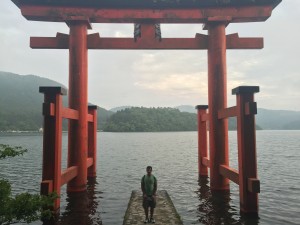
The second rule that Japanese passengers followed closely was to take up as little space as possible. It seemed that when entering the subway, passengers would first try to fill up any empty seats, then file into the standing room between the seats and stand while facing the seats. Once these options were all taken, passengers would stand in the space between the doors. This pattern of entering the subway did not seem to be as strictly followed as the rules to keep quiet. When the subway was not too crowded, passengers would stand in any of the three mentioned positions, even if there were open seats. Also, when the subway was extremely crowded, the strategy was just to shove others forward and get shoved forward until everyone got on. I feel that in the US packing together so tightly would offend people’s notions of public space. Yet, here, people squished together completely unphased, as if they were more than willing to be a little uncomfortable to let others get on. Even if the pattern described above was not always fully followed, there was certainly a general notion to save space. I had not seen any Japanese passengers sprawl out on the seats, even if many were empty, and no one seemed to move around the car once it had started moving. Even when waiting for the subway, people always lined up in front of the gates and left space for others to pass through. I had to try very hard not to pace around in front of the gates when I was waiting for my own rides to arrive.
On the subway, passengers mostly either slept or used their smartphones. Most of the smartphone usage seemed to consist of playing games or browsing the internet. I also noticed quite a few people reading books or comics. I was rather impressed with the way Japanese passengers fearlessly fell asleep. I am honestly unsure how they are able to wake up at the right time to catch their stop. I saw one woman who had her head leaning back against the window with her mouth wide open as she seemed to be in a very deep sleep. I started to worry that she might miss her stop, but the moment the train slowed down she woke up, looked up at the screen to check the next station, and fell right back asleep.
My guess is that most people partake in solitary activities both so that they have something to do that would not bother others, but also because it acts a chance to relax in a busy day. From personal studies, I understand the work life in Japan is very strenuous. Of course people sleep because they are very tired, but I feel that playing smartphone games or reading comics are not just a way to pass the time on a five minute trip, but more a short chance to mentally relax during one’s commute. On the flip side of Japanese rules that do not exist in the US, I have not seen any signs that tell people not to walk and use their smartphones at the same time. I am not sure about the rest of the US, but there are plenty of reminders to be careful when using cell phones around my campus. Yet, I was honestly impressed by people’s ability to read and play games during their commute while I struggled just to keep my balance. Besides staying quiet, the only norm for politeness I noticed related to holding onto handles. Japanese people seem to be extremely polite in letting others hold onto to handles or railings, and I have yet to successfully let someone else hold onto a handle I had reached for.
Compared to the US, Japanese public transportation is much more convenient, but also feels cleaner and safer. Even as one who does not speak Japanese, it was extremely easy to get from one place to the other in the huge city that is Tokyo, especially considering how confusing the map looks at first. Using an IC card made getting in and out very smooth, and there was even a chart that showed which car to use to exit in front of the stairs or an elevator at one’s destination.
The main cultural aspect I learned about Japan was how considerate the Japanese are of others. Staying quiet and saving space are not just subway habits, but how people live and behave whenever in public. Saving space is even built into the country’s architecture, as I already commented on in a previous report. I feel that being extremely considerate is mainly comes from cultural influences, but it has some practical motivation as well. A simple example is the way people wait for passengers to exit the subway before getting on. While that does show some consideration, it also saves one the trouble of bumping into others on the way into a car. Then again, being systematic could also be seen as a part of Japanese culture. For example, while I have never ridden the Egyptian subway, I am sure that when the doors open, everyone, whether exiting or entering, just moves all at once; everyone moving at once with no regard for direction is at least how many other things work there, including driving. I feel that it is difficult to divide habits into having purely cultural or practical influences. For example, one cultural aspect is indirect communication, meaning no one will ever bluntly tell you that you are doing something wrong, such as being too loud at a restaurant. Therefore, when in Japan, one must be extra considerate, since there is no way to be sure if you are bothering others. This shows that while being considerate may be a part of the culture, it has practical benefits as well. The same goes for personal space. On the subway, packing tightly together is the practical thing to do, since many people use public transportation; yet, sacrificing one’s own comfort for the benefit of the group has roots in the culture.
Week Three Overview
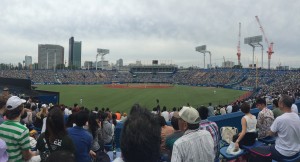
On Monday we had an interesting lecture about how baseball was a form of positive US-Japan relations during the turbulent years immediately before and during World War II from Prof. Sayuri Shimizu-Guthrie of Rice University. US-Japan relations during the war was a topic I had already been rather interested in, as I had written a big paper on the subject in high school. It was entirely new for me to learn how important baseball was to that relationship. It seemed the baseball was one of the only forms of positive or neutral interaction the nations could maintain during the war, and, during the occupation, it played a large role in easing the tensions between the US and Japan. On Friday we had a discussion and lecture about our experience with Japanese culture and the influence of Japanese religion. Many students shared difficulties they experienced due to the cultural differences, and Packard-sensei gave us advice on how to smoothly work through those differences, especially during our time at the lab. The rest of the lecture focused on how many religions came together to influence Japanese culture, and how the Japanese view religion today. Later that day, we had another discussion with the KIP students, this time focusing on the bioethics. This was a rather difficult topic to discuss, as no one in our group had much knowledge in the subject. Like the previous discussion, the KIP students did seem to be a little quiet, potentially due to the cultural influence of rikai. However, they certainly did make some good points during our discussion, and feel that they were perhaps not quiet just due to rikai, but also because the Nakatani students possessed the American cultural habit of confidently taking charge, potentially not giving the KIP students enough chances to speak. The last week of Japanese classes continued smoothly. While I am far from fluent, I feel that I at least know enough to get around on my own, and I hope to practice a lot more throughout the summer.
Question of the Week
How do people in Japan sleep on the subway so comfortably without missing their stop?
Introduction to Science & Engineering Seminar
This week we had two technical lectures from Professor Bird and one from Aoki-sensei. Professor Bird’s first lecture discussed semiconductor bandgap engineering. He focused on the applications of semiconductors and some of the quantum mechanics behind them. As devices get smaller and graphene becomes a more attractive option for semiconductors, quantum mechanics become more important for semiconductor engineering. Aoki-sensei’s lecture focused on scanning probe microscopy. He gave an overview of many different types of probes and the how they could be used to analyze the electrical properties of different kinds of materials. Professor Bird’s second lecture focused specifically on graphene and its applications for nano-electronics. In graphene, electrons have a very high mobility, behaving like light waves. However, graphene has no bandgap, making it difficult to use graphene for digital logic, as it cannot be turned off.
Week 04: First Week at Research Lab
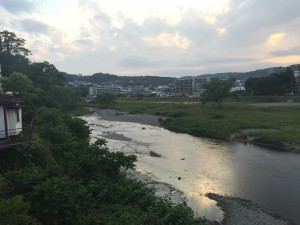
My first day at the lab was both fun and relatively relaxed. I met my tutor and another student from the Otsuji Lab at Urban Castle (my dormitory). My tutor had to rush back to the lab for an important task, but the other student walked with me and showed how to get from my housing to campus. The lab was rather empty when I got there, so the same student who walked me over gave me tour around the building. We then talked for a bit in the main student researcher room until more members arrived. They came one by one and I spent an hour or two just meeting and talking with them until my mentor, Deepika-san came. After she made it to the lab, she gave me another tour and some materials to study during the first week. Later, my tutor, Mitsushio-san gave me a bike to use for commuting to the lab and getting around Sendai, and then Deepika-san, Mitsushio-san, and the three undergraduate lab members got to enjoy watching me struggle to ride a bike for just the second time in my life. After my brief cycling journey to the cafeteria, I started studying the material I was given, and then went to dinner with a few of the lab students. Overall, it was a calm first day where I got to enjoy getting to know my lab mates.
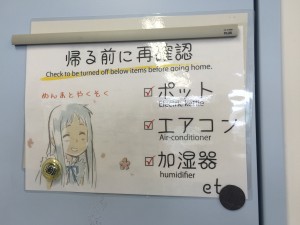
My mentor is Deepika Yadav, a second year doctorate student from India. She has been super friendly and helpful in getting me started on work at the lab. I am missing some of the key background knowledge required for my project, so Deepika-san has given me plenty of resources to get myself up to speed in addition to being patient with all my questions. From reading the Nano Japan alumni’s reports, it seemed that many students in the Japanese labs were extremely shy, especially around new members. However, all the students at this lab have been extremely friendly, and I am very glad. The three undergraduate students invited me to play soccer with them one morning and we have gone out to dinner a few times together. We are even starting to make plans to go to Yamadera some time. I think that I might actually be the shiest one among us.
At my lab everyone can speak English making communication between us easy. However, when the students speak with each other, it is usually in Japanese, which means I miss out on some of the conversations than happen in our room (and some apparently very funny jokes!). Yet, I think this mix of Japanese and English makes for a great environment, since it makes communication easy when I need it to be and provides me with a good chance to practice my Japanese. I do not think my lack of Japanese skill will be a hindrance for working effectively, but I might miss out on some group conversations. For some of the students, it might be hard to give thorough technical explanations completely in English, but we can also use diagrams, graphs, and pictures for getting information across.
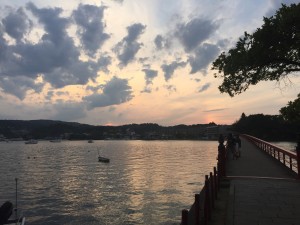
For housing, I am staying at the Urban Castle Kawauchi along with Haihao. It is a nice place that has been rather different than my dorm at UT. For example, we have to take our shoes off at the entrance and keep them in a specified area near the door. There are also no fridges in the rooms, but a set of community fridges and kitchens. Since it’s currently Ramadan I have to eat a meal called “suhour” before sunrise, around 1:00 AM, meaning I usually have to go out to the kitchen at that time to eat. I usually enjoy eating there, since there are usually a few other students there around that time and I get to watch Japanese comedy shows as I eat. Every day I have been riding my bike to and from lab. Since I did not really know how to ride a bike, I spent my first night taking a very long trip to the grocery store for practice. It was certainly a struggle, but on the way back I had gotten the hang riding, and now I am super glad I have this for transportation. It makes my daily commute much shorter.
I have not yet started work on my research project but have spent the first week studying and learning about p-n junctions, MOSFETS, and graphene. According to the schedule I was given, the first few weeks would be spent just studying and getting an understanding of the field. I did get to see a couple experiments that should relate to my own project, but I have not yet conducted any experiments myself.
Overview of Orientation Program
I feel that the orientation program was an excellent three weeks for letting us explore Tokyo, giving us with a basis for understanding Japanese culture, and teaching us enough Japanese to at least get around on our own. One interesting aspect I learned about Japan was how many different facets there are to the culture and life; specifically, how different life was in a place like Akita compared to Tokyo. Of course life in the city would be different than life in the countryside, but in my previous studies on Japan, I have only learned about the country and culture as a whole. There certainly were common aspects of the culture prevalent in both the city and countryside, but seeing the differences showed me that there is still much to see, learn, and study about Japan. The visit to the countryside also made me realize that I prefer quieter environments like Akita or the neighborhood around Urban Castle over louder, busier places like Tokyo. I have already discussed this in a previous report, but I think it is interesting that I learned that about myself here in Japan, even though I have been to both big cities and small towns in other countries.
Another interesting aspect about Japan is how truly considerate people are of each other, as I also discussed in a previous report. Through this I also learned a bit about myself. I had considered myself to be relatively considerate, yet, compared to the Japanese, I am not quite as careful when it comes to not bothering or disturbing others. I also now feel more confident in getting around on my own in a new place. There was one week where a few of the Nakatani students went to Akihabara together, and when they wanted to go back to Sanuki Club, I still wanted to do a little more exploring, so I decided to stay behind. It was only after the group had left that I realized I was completely alone in a foreign country where I don’t speak the language and don’t have signal on my phone with GPS. While I of course got around on my own in Austin, this was an entirely different experience. It was both exciting and liberating, and was just the first of many trips on my own in Japan. Now traveling around is easy, and I find it funny that I even got nervous when I was alone for that first time in Akihabara. Finally, I am happy I got to meet Japanese individuals and learn what aspects of Japanese culture are a big part of Japanese life and what is more a set of generalizations. For example, being polite and using indirect communication is something I have seen in everyone I met, while closely following rules, on the other hand, is something I have seen people break through things like jaywalking, graffiti, and talking on the subway. I feel that I have a better idea of how to describe Japanese culture that could not be gained through indirect studies but only through a first-hand visit.
The language classes were very helpful for giving the students enough Japanese to get around on their own as well as give some basic self-description. The classes have provided a good foundation for future studies and I hope that during the rest of the summer I can practice enough to hold a conversation entirely in Japanese.
Question of the Week
How would a Japanese person give a general description of Japanese culture? I feel that when studying Japanese culture from an American perspective, indirect communication frequently comes up because that is one aspect that is very different from American culture. We have received several talks explaining certain aspects of Japanese culture to a group of Americans, but if I were to ask a Japanese person to give a general description of the culture without this American frame of reference, what kind of aspects would come up? Would the indirect communication still be mentioned for example?
- This is a great question to ask your lab mates (both Japanese and non-Japanese) and you will probably get a variety of answers as it might not be a very easy question to answer. How would you answer the reverse question if you were asked to describe American culture after all? It might start out with a simple response but then there are exceptions and nuances and things that you need time to describe in greater detail so it ends up being a much more difficult question than it seems. However, for an interesting perspective on what Japanese undergraduates think about the U.S. see the student profiles and weekly reports from the 2016 TOMODACHI STEM @ Rice University participants. These 10 undergraduates participated in a five-week research experience in the U.S. and many of their reports reflect on what the experience taught them about the U.S. – but also what it taught them about Japan and themselves.
Research Project Overview
My current understanding of my project is that I will use spectroscopy to analyze and characterize graphene. I will use the optical pump and probe measurement method, using a terahertz probe, to study graphene as a detector of terahertz signals. So far, I have just been studying graphene and semiconductor physics in order to gain the background knowledge necessary for the experiment. I have started by learning about p-n junctions and MOSFETS and will next move into studying graphene physics specifically.
Otsuji-sensei has fortunately given me a detailed timeline for the coming weeks at the lab. As already mentioned, in the first three weeks the plan is for me to continue studying semiconductor physics and graphene. I believe I will be studying using mostly books and papers that Deepika-san gives me in addition to two scheduled lectures. By the end of the third week I will try one experiment that involves taking measurements of terahertz wave emission from graphene using Fourier transform infrared spectroscopy. By the fourth week I should start to look at the experimental process for studying carrier dynamics in graphene and begin my own experiment. After the mid-program meeting, the plan is to spend three weeks taking measurements and analyzing the data, and on the last week, summarizing the data.
Week 05: Critical Incident Analysis – Life in Japan
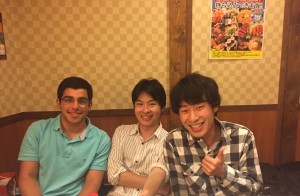
Fortunately, while in Japan, I have not had any big misunderstandings caused by cultural differences. There have been quite a few instances where I needed to speak to someone who did not speak English and my limited Japanese skills made communication difficult, such as when I tried to ask a question of the front desk at Urban Castle, or ask about particular ingredients in some foods at konbini. However, I do not think these cases represented a time where cultural differences got in the way of communication, as the cause of the issue was mainly my poor Japanese.
One example that was perhaps a mix of not knowing Japanese and a cultural difference occurred when I wanted to see Fukuura Island at Matsushima Bay and I needed to buy a ticket to access the island for a day. There were two buttons for tickets: one that said 100 yen and one that said 200 yen. I saw a large group of elderly Japanese ahead of me and it seemed one of them was hitting the 200 yen and handing out the tickets to the rest of the group. I then made the (rather silly) assumption that the 200 yen ticket was for buying tickets for two people and 100 yen was for one person, so I got a 100 yen ticket. Yet, when I showed my ticket to the woman at the counter, she suddenly got very angry and yelled out “No!” followed by “no, no, no, no.” I was not sure what I had done wrong and was a little alarmed. Then, after a few more “no’s” she pointed at the ticket and said “child.” I realized that the 100 yen ticket was for children, meaning I should have gotten a 200 yen one. I immediately yelled out “gommenasai” a few times and slightly bowed my head. Then, forgetting that she might not speak English, I quickly and nervously explained the assumption and mistake I had made; but it seemed that the instant I said I was sorry, both her tone and the expression on her face changed. She came around the counter and asked me for another 100 yen, got another children ticket from the machine, and let me go through using the two children tickets. She did this all very politely, more in a way of explaining the right way to get a ticket, much differently than her initial reaction of getting angry at my mistake.
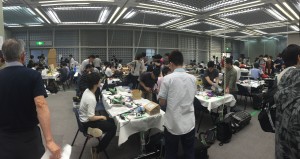
While this situation did not involve different cultural viewpoints, I was surprised to learn firsthand how powerful a sincere apology can be in Japan. From my own experience, it seems that in the US people will either give you the benefit of the doubt from the start (e.g. assume I made some kind of mistake with the ticket) or will be skeptical (e.g. think I was trying to save a dollar by passing for a child), and not change their opinion or treatment of me so easily. If someone got as angry at me for getting the wrong ticket, as the woman at Fukuura Island did, I feel that they would continue to treat me a little coldly until I went through or left. I do not think a simple apology would have made as big a difference. While this was something we had discussed during orientation, I got to see for myself how important apologizing can be in Japan. There was also one conversation I had with my lab mates that acts as a better example of viewing an event from different cultural perspectives, resulting in a sort of miscommunication, but I will leave that for the later report it seems we are to write about an incident at the lab.
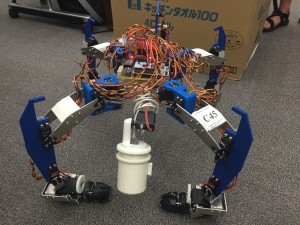
Question of the Week:
In a country where the people have a reputation for being shy and reserved, how can karaoke be so popular? I have heard this question a few times before, as well as various explanations, but I am curious to hear what a shy Japanese person who likes karaoke might have to say about this. To provide some context, my lab mates took me to karaoke right after the welcome party, and it was pretty fun.
Research Project Update
This week Otsuji-sensei came back to the lab and officially welcomed me on Monday evening. However, he left for another trip on Wednesday and was gone the rest of the week. Deepika-san was also gone, as she spent the week conducting important interviews in India. With them both gone it was a relatively slow week and I continued to study graphene physics. Deepika-san gave me a set of video lectures on graphene that were rather helpful, and I reviewed some papers about graphene and terahertz emission. The videos explained the atomic and electronic structure of graphene, as well as different ways of fabricating graphene. My project will specifically focus terahertz emission on dual gate graphene field effect transistors (DG-FETs) and one of the papers I reviewed was about the same topic. Mitsushio-san also told me that it would be useful to know what the first Brillouin zone is, so I learned about that through some videos and articles online. This week I was supposed to receive a lecture about graphene, but I think it did not happen since Otsuji-sensei was traveling. This means that the lecture might be moved to next week in addition to the already scheduled experiments, and Deepika-san should be returning from India, meaning next week will likely be busier.
Return to Top
Week 06: Preparation for Mid-Program Meeting
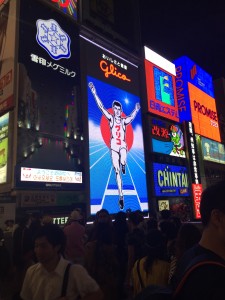
Up to this point, I think my biggest accomplishment was acting fast in a tight situation to make the trains from Osaka back to Sendai. This past weekend I took a trip to Osaka and left Osaka on Sunday night. To maximize my time in Osaka, I decided to take the second to last train to Sendai. I got to the station pretty early and eventually got on the train. After we started moving, a conductor came by and after I showed him my JR pass, he explained that this was one of two lines that my pass did not cover, so I needed to get off at the next station, which was Nagoya. From there, there were two more trains I could take to get back to Sendai: the second of which would leave in 15 minutes. Up to this point had been a series of mistakes (getting on the wrong train, and not reserving a seat from early morning in the first place) but this is where I think I made an accomplishment. I managed to get a ticket to get back on the same line from a ticket machine, but the staff at the gate said that I needed some kind of additional ticket from a JR office. I started walking over to the office, then looked at my watch and saw that there were only 4 minutes left to get to make the last train to Sendai. I decided here to use my very limited Japanese and mostly English to explain my situation to the gate staff. He thought for a moment, then gave me a pass with a stamp on it and told me I could pay for the ticket at Sendai station, and I managed to make it on the train. I got the payment after a series of long conversations and explanations with the Sendai station staff the next day. Although, this entire situation came up from my own mistake (which taught me to always reserve shinkansen tickets for important trips late at night) I think the accomplishment is that I was able to act quickly in a tough situation and ask for help of the staff when I needed it.
Besides this, I think a more long term accomplishment has been fitting in at my lab. I think this came largely from the kindness and efforts that my lab mates have shown me, but I am very glad I have been able to have fun with them. I was worried that it might be difficult to make friends with the language barrier, but I have been able to communicate clearly with them, and it has been great spending time with them.
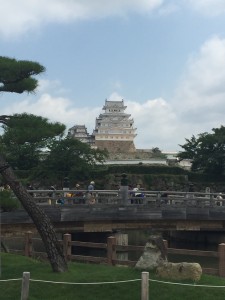
My greatest challenge has been improving my own Japanese. I wrote earlier how I realized how important it is for me to improve, and that this is a unique opportunity to get a lot of good practice, but my improvement has been slow. Many times I try to use some Japanese but get responses in English. Yet, I also think I have been relying a little too much on others knowing English, so I should make a greater effort myself. Next time I have a casual conversion with my lab mates I will let them know that I want to improve my Japanese and try to chat a little in their language. From there, I hope to work toward having an entire conversation in Japanese.
My research is progressing according to schedule so far. I am starting to move on from studying graphene to observing and practicing with some experiments. According to the schedule, after the mid-program meeting I should start working on some experiments myself. According to the schedule, though, I was supposed to have received two lectures from professors, but got only one from my mentor. I think this happened because Otsuji-sensei has been traveling very frequently, but this has not posed any problems since I received a lecture from my mentor that was very clear and helpful.
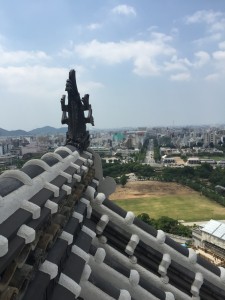
Question of the Week
I went to Osaka this weekend and it was extremely crowded. To me, it felt more crowded than Tokyo. Yet, unlike other crowded cities I have been to outside of Japan, the streets were spotless. How does such a crowded place stay so clean?
Also, this is a question that has had me very perplexed since week one, but I did not think to ask it here until now. Why do many convenience store clerks speak Japanese in such a different way than what is normally heard everywhere else?
Research Project Update
This week the pace has picked up at the lab. While I still have not yet begun my own experiment, Deepika-san returned from India and I was able to observe and study several experiments that she performed. First she went to the clean room to check the condition of a graphene FET sample. Unfortunately the sample had not been in very good shape and did not present very good IV characteristics. We later went to a terahertz detection setup to see if any G-FET samples showed a response when hit with a terahertz laser. Deepika-san explained to me how the set up worked. It emitted terahertz waves using a device called a UTC-PD, which took in two lasers of different frequencies and emitted a light with a frequency that was the difference of the frequencies of the two inputs. For this experiment, the two input frequencies had a difference within the terahertz range, resulting in a terahertz light output from the UTC-PD. This terahertz output was shined on the samples and we touched very thin probes to the FETs’ contacts to analyze the samples’ voltage and current. Before checking the samples’ responses to terahertz, we checked their IV characteristics to determine which samples were worth studying for terahertz detection. However, many of the samples had been damaged and exhibited poor characteristics and we have not yet found one exhibiting useful IV behavior. Next week, after checking more samples and hopefully finding a good one, we will shine the terahertz light on the sample and see if there is any response.
In addition to observing Deepika-san’s experiments, I continued to read on graphene and review material from the previous week. Deepika-san also gave me a very helpful lecture about graphene physics and terahertz emission from graphene. This was mainly so that I could understand the topic of negative dynamic conductivity, an important concept for terahertz emission that had been mentioned in several papers I read. Deepika-san’s lecture made the idea very clear and also helped me better understand some of the basics of graphene.
Return to Top
Week 07: Overview of Mid-Program Meeting & Research Host Lab Visit
The Mid-Program Meeting was an extremely fun few days where the students got to all get together once again, update each other on our research, and explore Kyoto. The schedule was certainly busy, but I did not feel overwhelmed while we were there, meaning the trip was all very well planned out. Shortly after our arrival at the Kansai Seminar House, we spent some time sharing what we felt were are greatest accomplishments and frustrations during the four weeks at our labs. After that we had dinner and went to our rooms, and the hotel staff were nice enough to set aside some food for me to eat at sunset since I was fasting.
The next morning we traveled to Kyoto University to give our presentations and take a tour some of the University’s labs. It was certainly interesting to see how varied some of the other students’ research topics were as well as some of the more subtle differences between my research and the topics more similar to mine. This was the first time I got to hear detailed explanations of everyone’s research topics, as back in Tokyo many of us had not even been assigned our projects yet. The tours of the Kyodai labs were also very different from the Todai lab tours as there was a bigger focus on biology and chemistry, unlike the electrical and mechanical engineering based research at the Todai labs. As we were leaving Todai, we noticed that we were near Ginkakuji and decided to visit. Both the temple and Philosopher’s Path leading to it were rather scenic and calming with many trees and plants. We then returned to the seminar house for a July 4 barbeque, which I was able to join in on since the other students were grilling well through sunset. Endo-san and Packard-sensei were extremely nice in helping me get food grilled around sunset, and the hotel staff even made special sauce for me to use. With that sauce I enjoyed what were probably the best vegetables I have ever tasted. Packard-sensei explained that Kyoto vegetables had a special flavor to them, and it was true. We also celebrated Briana’s and Chandni’s birthdays with cake that Sarah bought, and after eating another tray of onions and peppers, I got some helpful feedback from Sarah on my presentation from that morning.
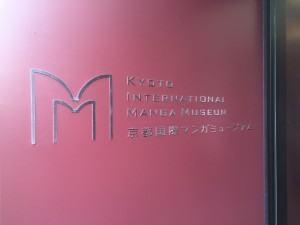
We spent the day after that sightseeing in Kyoto. Our first stop was Kamigamo shrine, where we got a special visit to one of the inner areas of the shrine that is normally closed off to tourists, since Horikawa-san’s family has 1500 years of history in Kyoto and knew the shrine attendants well. We also got to see a special purification ritual before entering the inner area. Next we experienced a tea ceremony, and the women performing the ceremony were kind enough to let me participate and go through the motions even though I could not drink the tea. I had never seen a tea ceremony before and was impressed by how careful the motions were in preparing and serving the tea, even though they had to be repeated several times to give tea to each of the students and staff. I also appreciated the way one was supposed to admire the design of the tea cup before and after drinking. Specific motions were made a part of the ceremony so that the cup could be fully examined and appreciated as a piece of art. From here we traveled to Kinkakuji, which was truly beautiful: a golden temple standing alone in a green pond, it was a magnificent sight. After spending some time at the temple, we went to lunch, where I had a short but pleasant conversation about manga with our photographer. Then we went to the gallery of Kyoto Traditional Arts and Crafts, where in addition to some amazing sculptures, carvings, and other works of art, there were platforms where we saw artisans actually working on their craft. First was a weaver who sliced what I think was straw into extremely thin strands to use for making baskets. Next was a painter who made extremely elaborate and intricate paintings on the surface of pottery. The paintings were small enough to fit on the pottery but contained a great amount of detail. Finally, we saw a sculptor who carved statues out of wood. Using only a set of blades and a block of wood he made sculptures with an incredible amount of detail. The bodies and faces were so smooth and in perfect proportion, while their clothes seemed to fold and flow as if they were actually made of fabric and not just wood. These platforms were a very smart idea as they showed the amount of skill and effort that went into making each one of the pieces we had seen at the museum. We spent a bit of time looking at more pieces and then had free time to explore the area around the museum. Erica, Daniel, Chandni, and I went with the photographer to visit the manga museum. There we saw walls upon walls of manga, a lawn where one could take books to read, an exhibit about pop art in manga, information about the history of manga, and a funny show given by a man who spoke and acted like a manga character himself.
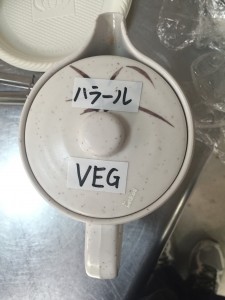
We then returned to the hotel, where we received yukata and geta to wear for the night and keep as a souvenir. With our yukata on, we lit some fireworks in front of the hotel, which I thought was not only fun but also very relaxing in an unexpected way. After the fireworks had ended, it was well past sunset and time for me to eat the food that had been waiting in the same room as on Sunday. While on Sunday I ate completely alone, this time several other students decided to join me. They sat in a row of chair across from my table, and a few of them started playing piano, while Packard-sensei helped me get all the food moved onto the table. I joked that it was rather surreal to be breaking fast while having seven or so people stare at me as I ate to live music coming from the piano, but to be honest, it was the best meal I had eaten during the past month. It felt great to be with everyone while I celebrated the last day of Ramadan. It was so nice of Packard-sensei to use some of my rice to put together rice balls even though she needed to go somewhere herself, and the pianists of our group happened to be playing some of my favorite songs. (Well, Donald had somehow remembered what I told him about my favorite music and started playing based on that, which I also really appreciated)
The next morning we packed up and traveled to Kobe for a tour of Sysmex Techno Park, a company founded by the original founder of the Nakatani Foundation. We learned about the products Sysmex made and services they provide and got to see their garden and pond. I was surprised to see how much effort was put into making a company such a scenic place to work. From here we went to the shinkansen station and we each went back to our host cities.
The parts of the visit that had the greatest impact were getting to enjoy fireworks in yukata with everyone else and breaking my fast on the last day, as already mentioned. Wearing yukata and watching summer fireworks in Japan had been a big part of my dream of visiting Japan for a long time, and I never imagined that I would get to do it with a big group of great friends. The research presentations and discussions about our experience at the lab had also had an impact on me as well. The pace at my lab has been rather slow since I was meant to mostly study before the meeting and perform experiments later. A couple other students had been frustrated with the pace at their labs as well, and many students had already done some very interesting work with their experiments. Since I knew my schedule, I had not been too worried about the slow pace, but seeing how much the other students had done and how hard it had been for other students to work at such a slow pace, I became much more motivated to truly make the most out of the next four weeks at the lab by pushing for a faster pace and more experiments in addition to asking more questions about the details behind graphene and terahertz radiation.
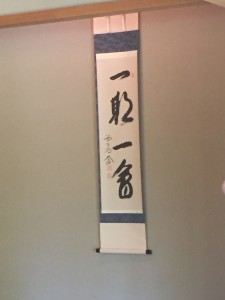
My biggest challenge had been finding the correct meeting point at the station in time. We were supposed to meet at the Hachijo gate and not the Hachijo East or Hachijo West exits, and I could only seem to find the Hachijo West gate. I asked several people how to find the Hachijo gate, but every time they responded by pointing toward the Hachijo West exit. I told them “just Hachijo, not Hachijo West,” but they continued to point at the West gate. Finally, I asked someone with a map how to get to “just Hachijo gate” and it turned out that from where I was, I needed to pass through the Hachijo West exit and walk a bit to reach the Hachijo gate. Very embarrassed, I rushed toward the exit and finally met up with the rest of the group, making us all leave the station a little late. Yet, I learned how helpful it can be to ask others for directions and how important it is to clearly explain what I am looking for.
As explained above, the most helpful thing I learned was the progress other students had made on their research projects. Seeing the experiments they got to perform and even one discovery that another student made gave me extra motivation to spend time working on the upcoming experiments at the lab. I feel that I want to be more active in getting Deepika-san to teach me even more about the different setups so that I can gain a deeper understanding of the material I have been studying and spend longer hours working with the samples as well as gathering and analyzing data.
Question of the Week
At the two hotels we stayed at and at the dorms, there seem to be many rules regarding what hours certain facilities can be used. For example, the baths and the seminar house were closed after 10:00 PM and the showers at Urban Castle are not to be used after midnight. I have not seen restrictions like this in American hotels or dorms, so why is this the case here?
- This is mainly for safety and security reasons but also to allow set times each day when these rooms can be cleaned or prepared for the following day/time of use. Also, these are the times when it is most common to bathe in Japan whereas in the U.S. there is a greater diversity of times when one is most likely to shower/bathe. In the past, it took a long time to heat up the water for a bath so this is why most people took baths at night, as then the water would have had all day to heat. So there is a bit of history behind this custom too.
Research Project Update
This week I continued to observe more experiments on the UTC-PD terahertz detection setup. We chose the GFET sample with the best IV characters to test for terahertz response. I placed the probes on the contacts for the first time and was fortunately able to make contact without any issues. Unfortunately, we did not see any signs of terahertz response, meaning we did not see an increase in current from the lock-in amplifier when the laser was turned on. We then checked the IV characteristics of more samples in hope of finding one that would show a terahertz response. However, we still did not see anything. We made some adjustments to the setup that were meant to aid in seeing a response, such as applying a bias voltage to produce a small current that the terahertz radiation would hopefully increase. However, we were still unfortunately not able to see a response.
We spoke with Otsuji-sensei and Stephane-sensei to get some advice on how we could improve the chance of seeing terahertz response. The professors stated the available samples all had a very slim chance of detecting terahertz and suggested that we move onto a time domain spectroscopy experiment until new samples arrived. This setup was new to both Deepika-san and me, so after she explained the basics of time domain spectroscopy to me, we adjusted the sample stage height and oscilloscope settings just to check that the setup was able to detect its own terahertz emission. Were able to see some response, but not as sharp a peak as had been previously reported. Since adjusting the lenses and mirrors was a task that was too difficult even for Deepika-san, we decided to leave the set up to Stephane-sensei, and after he makes the necessary adjustments, we can perform a terahertz detection experiment on the setup.
Week 08: Research in Japan vs. Research in the U.S.
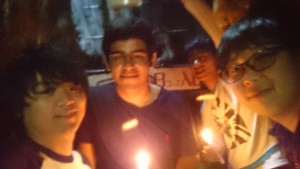
At my lab there seem to be both obvious and subtle rules relating to the hierarchy. Honorifics seem to be rather important, as students of younger grades will address older students using the honorific “san,” and older students address younger students using “kun” (except for Mitsushio-san, for some reason; my lab mates seem to fondly call him “Michi”). Among the students, this had been the only obvious difference in hierarchy, as they mostly seem to chat and joke with each other rather casually, regardless of the difference in year or age. More subtly, however, I noticed that younger students seem to approach the older students much less frequently than older students do to the younger ones. The younger students often receive explanations or instructions from the older students, and the younger students would only approach the older ones for questions or reminders. It seems they do not want to bother the older students during their work, but the seniors more freely interrupt their juniors. I also noticed that students should never contradict professors. My mentor and I had received several lectures together, and after some lectures, my mentor explained to me that she was sure she had heard a mistake from the professor. Yet, I noticed that instead of pointing out the mistake during the lecture, she waits to bring it up in the form of a seemingly unrelated question a while later.
I feel that the hierarchy is present in a much subtler way than how it had been described during orientation. If it had not been for the honorifics, I would have a hard time discerning which student was what year based on social interactions alone. Based on our lectures, I was worried that the hierarchy was one aspect of lab life I would need to always keep on my mind to avoid making any offensive mistakes. However, the students are all very casual and friendly toward each other, and since Deepika-san and Mitsushio-san are my mentors, I am free to approach their desks and ask questions as I need. Since I am the youngest at the lab, I just need to be careful to address everyone with “san” or “sensei.” The orientation lectures’ description of the professor’s position seems to be more accurate, however. The professor works in a room separate from that of the students at the very top of the hierarchy, and since he is busy, we have to be careful not to bother him too much with intrusions. Recently, however, my mentor has encouraged me to ask for more of his time to get help on my research project.
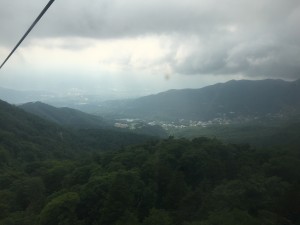
I think that in academic research there is certainly a bigger emphasis on hierarchy. While it is not so prevalent in the social interactions I have seen, the hierarchy is made clear on the lab’s website, through honorifics, and on a sort of sign in chart the students use to show whether they are at the lab and which room they are in. In the US, from the graduate research groups I have seen, I have no way of knowing what year any of the students are and would only learn by either directly asking them or talking to them about their research. Additionally, I think it is highly valued for students to publish papers and present results at conferences. At my lab, many of the students have given practice presentations for upcoming conferences, and my mentor is currently preparing a journal publication. I know that these are certainly important tasks for professors in academic research in the US as well. I imagine this is also important from graduate student researchers, but with the experience I have had with a graduate student research group, more emphasis was placed on meeting project deadlines and making progress along the scheduled project timeline as opposed to preparing results for conferences and presentations. However, this may have just been the nature of my own experience, as it was certainly very different from the type of research done at my current lab in Japan.
One big difference between my experience here and in the US is that the lab environment seems to be much more relaxed and
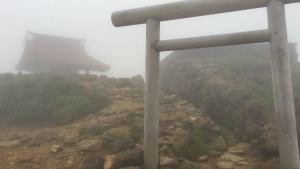
social. Students often group together between desks and openly chat with loud voices and laugher. The layout of the office makes this sort of environment easier to achieve, as all the students are in their own closed room, and all the desks are placed close together. In the research groups I had seen at my own university, students from multiple research groups sat at desks that were scattered all about a large open room, and only the professor has his own office. Since the room was so big, loud voices would be heard by many, so students only spoke to each other in very quiet voices, and their conversations were usually about work. They were still friendly to each other, but this made for a much different environment than that at my Japanese lab. I feel that another difference is the connection between research and industry. At my university, many professors work closely with large companies for funding and sometimes equipment, and I have heard of company representatives turning to professors in search of Masters or PhD students. At my lab, however, I have not noticed much talk of research tied to industry, but have heard of many Masters students leaving the lab for jobs in industry. Based on what I have seen at my lab, it seems industry and academia seem to compete more in Japan than the US. As an undergraduate unsure of exactly what path I would like to pursue, I think I prefer the American environment, as it leaves the door to industry open longer than in Japanese labs. Regarding the social aspect, both environments certainly have their merits. While the more focused environment I have seen in American labs makes it easier for students to be productive, I think I prefer they layout of my Japanese lab. It has allowed me to become friends with my lab members more easily, and it is still not difficult to be productive at my own desk or in the experiment rooms.
There is one anecdote that demonstrates the rule of who can approach what desk relating to the hierarchy. I guess since I am the only junior to the Bachelor’s students, they often tap me on the shoulder to ask me about my plans for the weekend, things I have seen in Japan, or other various topics. In one instance, we had spent about an hour chatting and I felt it was time for me to get back to reading some of the papers my mentor had given me. I decided to try practicing some Japanese-style indirect communication and started glancing down at my papers as we talked. However, they still continued to chat for quite a bit more and one the Masters students joined in on the conversation for about half an hour. He then noticed that I wanted to get back to reading, and said “I think we should all get back to work.” With that, the other students all turned to face their desks, quickly ending the conversation. It seems that the older students not only hold the power to approach desks to start conversations, but also to end them.
Question of the Week
In Japan, with popular stores or centers in Japan, like konbini, pachinko parlors, or game centers, it seems there are many of the same kind of store all clustered together in one location. For example, in Azabu-juban, there is on street with two separate Seven-Elevens facing each other from opposite sides of the street. Why do so many of the same kind sort of stores open so close together? It would make since if it is for competition, but I often the stores seemed to be owned by the same company, like with the two Seven-Elevens.
- Actually, as of last summer, all of those 7-11’s in Azabu-juban were different konbini brands competing with one another. One was a Sunkus, one was a Family Mart, and one was an AM/PM. So 7-11 must have expanded and either bought out the competition or merged with another konbini brand to take over. But one of the key reasons there are so many konbinis so close to each other in Japan is that there are so many pedestrians and you want to have as many conveniently located stores as possible since no one really chooses which konbini to go to based on the brands; it’s more about which konbini is closest to you at any given time. Kind of like some placed in the U.S. where there are Starbuck’s directly across the street from each other so that its convenient to swing through the drive-thru no matter which direction of a busy street you may be driving down.
Research Project Update
I had originally thought that in these two days, work at the lab would begin to move at a much faster pace, as described in the schedule. However, looking at the schedule more closely, it seemed that these two days had not been accounted for. In addition, Stephane sensei had still not completed adjusting the spectroscopy setup, and we only had bad samples to use with the detection setup. (At this point we were still focused on detection and not emission) Therefore, I was given more papers to read, and Deepika-san showed me the bonding machine. This was a device used to bond gold wire between a sample’s contacts and much larger gold contacts. This was to make the device easier to use, as touching probes to the larger contacts is much simpler than touching them to the smaller ones. I was able to make several connections between contacts, which was rather fun. The true challenge came with threading the gold wire through an extremely tiny hole at the tip of the machine’s needle. I had been unable to fit the wire through the hole, but I hope to try again soon. Next week, with new samples, we will continue working with the terahertz detection setup.
Return to Top
Week 09: Reflections on Japanese Language Learning
Lab Visit
On Tuesday morning, Sarah, Kono-sensei, Ogawa-san, and Horikawa-san visited my lab. The visit began in our group meeting room with an explanation of my project from Otsuji-sensei. Up to this point I had spent most of my time at the lab studying and learning about graphene, and while I had been studying, my mentors performed emission experiments. However, those samples seemed not to be working, and the focus changed to detection. While studying, I observed several detection experiments, but the samples had not shown any results. As a result, immediately before the visit the focus shifted back to emission, as described in the original project description. Because of Otsuji-sensei’s explanation that morning, I was able to hear additional details about my project, and Kono-sensei’s questions gave me an even better understanding that I would not have otherwise gained. I asked my mentor about his questions and why he seemed to be perplexed by parts of Otsuji-sensei’s explanation. In order to understand the source of confusion I needed to understand key details about my sample and the experimental process for emission. Asking about Kono-sensei’s questions led to an extremely helpful discussion with my mentor that made the rest of the details about my project clear. I am certainly glad that I was able to clear up all of my own points of confusion during and after the visit, and was able to follow the morning’s discussion because of the studying I had done in the previous month. However, I feel that I should have made these details clear well before the visit, and was therefore a bit nervous and shaken during the morning’s explanations and tours of the setups. I had made a mistakes on a point that I knew well and feel that I needed to rely on my mentor for explanations of some of the setup’s aspects I had not known about. Since I had observed many experiments on these setups, I knew how they worked and was able to give the basic explanation, but I think I could have definitely done better in providing more details and better answers. Even though I felt it could have been smoother, I am extremely happy the visit happened as I have a new direction for my project; and since I understand it well, I can spend the next three weeks performing experiments and use all the time I spend at the lab productively. (I just need to hope the results are good so that this can be the last new direction.)
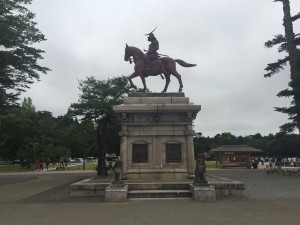
In previous reports, I have already described my struggle with improving my Japanese after the classes in Tokyo ended. As previously stated, most of the time I try to use Japanese, I get a response in English, and instead of pushing for more Japanese, I will just continue the conversation in English. However, more recently I have started to be more active about using Japanese when I can. I think one simple but helpful technique has just been to ask many questions about how to say certain words in Japanese or what some Japanese words mean in English. In regular conversations, my lab mates always speak to me in English since I think they are also eager to practice a foreign language, but they are always happy to answer questions about Japanese. They usually speak to each other in Japanese, and I do not know enough yet to follow along, but I can sometimes get the basic gist of their conversation. Outside the lab, I think the staff or strangers I speak to are not only giving me an easier time but are also saving themselves trouble by speaking with me in English instead of struggling to understand my Japanese. However, I finally had a full conversation in Japanese that never switched over to English! I went to get a haircut on the weekend and, like in the US, it seems the hair stylists like to make small talk with their customers while cutting their hair. Yet, it seemed this stylist actually did not know English, which made me super happy, since it meant our only option was Japanese. It was pretty simple chit chat about where I am from in the US, when I got to Japan, what I look forward to seeing, etc., and these had all been things I learned to say in our Japanese classes in Tokyo. I was not able to give perfect responses, but it seemed that she understood what I was saying, and it at least made enough sense that she kept the conversation going.
My most difficult linguistic experience was with the high school students in Akita, but since I already described this in a
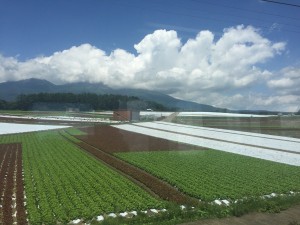
previous report, I will describe my second most difficult experience. I previously wrote about an adventurous return from Osaka, but I didn’t explain the details of how I got the issue with my ticket settled. I received the stamped piece of paper from the station staff in Nagoya and was planning to pay in Sendai Station. The stamped paper had some text on it, so I thought that once the Sendai Station staff saw it, they would understand the situation. However, upon seeing the stamp, they just responded with a quiet “Ehhhhh?!” and confused looks. Three of them looked very carefully at the stamp, and I handed them my tickets and JR pass one by one, trying to explain my situation very slowly and that I needed to pay for the train from Nagoya. After half an hour of me trying to give extra details and an occasional question from them, one staff member finally pulled out a tablet with a translation app. He typed out the words “station,” “tomorrow,” and “morning,” and said to go to the ticket office the next morning since there would be English speakers there. This was the first time where I was not able to actually get my point across because of the language barrier, and I would have to wake up early the next morning to go to the station before arriving at lab.
In a similar situation, I struggled to speak with the Urban Castle front desk. However, so far, I have been able to get my main point across with them. From our conversations, I learned that key words can be very helpful for communicating through a language barrier. Even without proper grammar or complete sentences, it is possible to let others know basically what you might need if you have the core vocabulary that would act as the basis for the complete sentence.
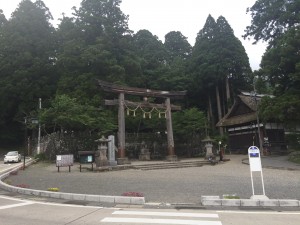
My time in Japan has strongly motivated in continue studying Japanese. While many situations would have been made easier by knowing Japanese, what pushes me even more is the amount of conversations I miss out on because I am not fluent in the language. My lab mates seem to have many fun chats in Japanese that I cannot follow, and at a performance near Sendai Castle, or in front the television in Urban Castle, I have sat through much dialogue entirely in Japanese where I understood little. During all of these conversations I thought how great it would be to speak the language, and the classes in Tokyo showed me that Japanese is rather complex, requiring serious study. I would like to take more classes or self-study in the future, and I want to do so soon before I forget what I learned here.
Question of the Week
I really like listening to Japanese music and was excited to meet Japanese people who I could get some recommendations from. However, I was surprised to hear from most of the people I met that they actually did not listen to much Japanese music, as they mostly like American songs. I already knew that American music was popular here, but I did not think it was popular to that extent. Is popular music here the same as it is in the US, since the popular songs are all American? Do a majority of younger people in Japan really listen to more American music than Japanese music, or was it just a coincidence among the people I asked?
- This is a great question to ask your labmates about or, better yet, ask them where the best music store in Sendai is. That is one of the cool things about Japan – they still have actual music stores or sections of bookstores with tons of CDs that you can listen to and learn about all the most popular new artists. That way you can see which Japanese artists you like the most and who knows – maybe you’ll introduce your labmates to some good Japanese music they might be missing out on too!
Research Project Update
This week we mostly continued to perform terahertz detection experiments. However, as I explained previously, the focus for my main project that is planned for my poster will be terahertz emission. Since the detection experiments have not shown any results so far, we will aim for emission as the primary project. Yet, the emission experiment requires the bolometer to be filled with helium, which happens in a different building on campus and needs to be reserved in advance for specific days. Therefore, we will have to perform the emission experiment next week and spent this week working on more detection experiments. The new samples were still being used by Stephane-sensei throughout the week, so we continued to work with older samples. We found some extremely old devices that were cracked and falling apart, and surprisingly, they showed decent IV characteristics, but no sign of terahertz response. Deepika-san showed also me how to use the data plotting software Origin, which I will use for my poster graphs. Next week, Stephane-sensei should be done with the samples and we should have the helium for the emission setup, meaning we should get to perform both emission and detection experiments on some fresh samples.
Return to Top
Week 10: Interview with Japanese Researcher
I decided to interview my mentor Deepika Yadav, a second year PhD student studying Communication Engineering. Here are the questions I asked as well as her responses. The responses are not word for word what she said, as I am reproducing them from notes I took during the interview.
Why did you decide to study in the field of Communication Engineering and why this lab?
Deepika: I have been interested in Communication Engineering since high school, and was particularly interested in transistors. I also felt that I had a good understanding of the field and chose Electrical and Communications engineering for my bachelor’s degree. Also, my father was in the Indian Air force and worked with radars and similar technology, giving me a basic interest in the topic. I became interested in working in a clean room on device fabrication and wanted to research terahertz, as I think it is the best technology to make better high speed technology a reality.
When I was deciding where I wanted to do research, I chose between the United States, Europe, and Japan. I had already done research in the US and wanted to experience a new culture and learn a new language. Since I was more interested in Japanese culture, I chose to do research here. I feel that the Otsuji lab is special because while many labs use terahertz for spectroscopy and device characterization, the Otsuji lab focuses on building devices that can emit and detect terahertz.
What is your international experience working at labs in other countries or with researchers from other countries?
As a third year undergraduate student, I interned at the New Jersey Institute of Technology. I worked on chip design for a vending machine controller and spent a lot of time working with the PhD students there. Since I spent a great amount of time with the students and not so much with the professor, this shaped my picture of research in the US. I think that in the US there is more distance between the students and the professor than in Japan. Also, I did my Masters at a research institute in India. There, it was only scientists and no professors, and the scientists were split into different groups. While there were foreign researchers there, my group was only Indians, so I did not get much of an international experience there. I have also been to several conferences in the US.
In India I feel that the groups were very small, with already small groups being divided into even smaller subgroups. Each scientist was only assigned two or three students, but in Japan, one professor is in charge of many students. I also think research in Japan is different from American research. Japanese research seems to be more open, as researchers are more willing share results with each other. There are many group meetings, and the moment one gets results, it gets shared with the whole group for review and feedback. In the US, it seems results only get shared after they are published, creating a more competitive environment. Also, labs are more formal in the US. It is much harder to meet with a professor there, which here if I knock on Otsuji-sensei’s door, he will always let me in and answer my questions. Then again, maybe our lab is just an exception. I have heard from friends here that Japanese labs are usually very strict.
How many international researchers work at this lab, and how do you feel internationalization has impacted the work done here?
There are two visiting professors from other countries, and currently I am the only international student, but there have been more in the past. It has mostly been students from Asian countries that join as international researchers. One impact the internationalization had is that the Japanese students get help from English speakers for reading English resources or preparing English papers or presentations. This really increases the students’ confidence. They become more confident to travel to other countries, and there is definitely a difference in confidence between the students here and those in labs that do not do much international work. Otsuji-sensei provided many opportunities for the students to travel and takes pride in having an international staff. He seems to highlight that in his papers and presentations.
How would you describe the nature of this lab’s environment? How do you think it compares with an American or Indian lab?
Here, I feel that there are many students all being managed by one professor and there is a strength of group activity and openness. There are many long discussions between researchers about past work how to advance in projects. In India, labs are more conservative. Researchers keep results or ideas to themselves and there is much competition, similar to the US. I also feel more free to speak to the professors here than in the US. However, I am only speaking from my experience as an intern, so I am not completely sure how it for all labs and researchers.
Question of the Week
I have noticed that there are many active elderly people out and about in Japan. Around Sendai I see many riding around on bikes and on every weekend trip I have been on there were always elderly folk visiting the places I did; even up the thousand steps of Yamaerda and inside the dark, tight Irimizu cave. I understand the population is aging, but I am more surprised by how active they are. I do not think the older population in the US is like this, and it is certainly not the case in Egypt. What are some of the reasons behind this? Is it possibly related to health, a cultural mindset, a mix of both, or some other reason?
- There have been lots of studies and articles written about why people live such long, healthy lives in Japan as compared to places like the U.S. Certainly diet is an often cited key part of this but there is much more to the answer as well and if you search on Google you’ll likely find many articles. One thing that may not be immediately apparent though is that, as compared to the U.S., there is greater value put on final stage of life in Japan. This is a time when you are free from work-related and family-related stresses and can really embrace your individuality and hobbies/interests that you may have had to set aside earlier in your life. Most people in Japan nurture life-long friendships which is easier to do than in the U.S. as typically people don’t change jobs or move as frequently. Up until recently, most people lived in multi-generational homes where grandparents often played a key role in the care of young children. In the U.S. there seems to be more of a fear of getting old and that once we can’t ‘work hard’ we have no value where in Japan the focus on the group perhaps enables people to embrace the changing roles they go through as they age. Japan also faces many challenges with aging too. Here are just a few articles on this topic though you can likely find many more.
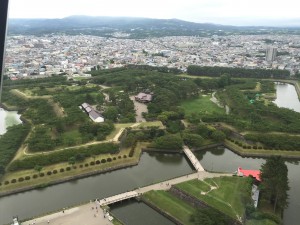
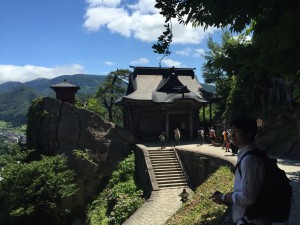
Research Project Update
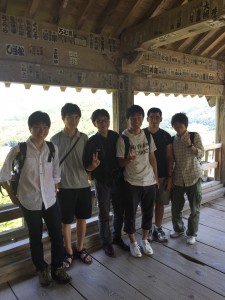
This week we were planning on performing the terahertz emission experiments on the new samples that had recently arrived. However, we were unfortunately unable to perform any emission experiments due to several equipment malfunctions. We started by pouring liquid nitrogen into the bolometer to precool it to 100 K, readying it to be pumped with helium. During the pumping, there was a helium leakage. This did not create any problems for the experiment on this first day, since we got the needed helium into the bolometer, but much helium was lost since the tank could not close properly after the pumping was done. We then took the bolometer back to the setup and then noticed that many of the pins on the sample holders used for keeping transistors in the cryostat during the experiment were broken. These pins made the electrical connection between our measuring instruments and the device, so we could not do the experiment without them. Therefore, Deepika and I repaired all the needed pins with some solder. There was one pin that we could not manage to fix, so we decided to short two of the contacts on our device so that different pin could be used. We did so using silver paste, which needed some time to dry, and before the drying was done, all the helium had boiled out of the bolometer. We had also booked helium for Friday, so our plan was to make sure everything was ready for the experiment by the end of the day on Thursday.
We started by measuring the IV characteristics of one of the devices, but it seemed to be showing a very low current response. After checking the device in the clean room, we saw the device was somehow burned during the IV check. We decided to ask Stephane sensei to observe us as we performed an IV check on another one of the devices to make sure we were not doing anything wrong. This time we kept all the equipment we used grounded to make sure there was no electrostatic charge that could cause damage. However, during the IV check the second device was also burned leaving only one device left in a usable condition. Since the IV checking setup seemed to be destroying our devices, we decided just to check the IV characteristics of the last device using the sample holder right before doing the experiment on Friday morning. Yet, it seemed that the helium leakages happened on Wednesday because the helium pump was broken, and it was not yet repaired by Friday. Without helium, we were unable to perform the experiment and postponed it to Monday. (However, writing this from the future, I know that on Monday the helium pump will still be broken, and the bolometer will also break, meaning I will likely not be performing an emission experiment.) So, in summary, everything broke. Yet, I hope that when Otsuji-sensei returns from his current trip, he can help me determine exactly what to do for my project since the planned experiment could not happen.
Week 11: Critical Incident Analysis – In the Lab
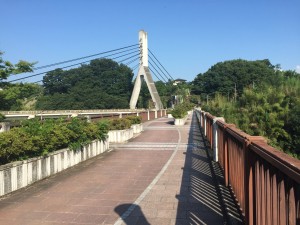
During my second week at the lab, there were two incidences where I felt I got the wrong idea across due to differences in cultural perspectives. I spent my first weekend at Matsushima, and was welcomed by my professor the following Tuesday. When he asked me about the trip, I told him how nice and enjoyable it had been. He then asked if there had been any issues during the trip, and, even though this was minor, I mentioned that I missed the train I planned to take back and had to wait almost an hour for the next one. This was an extremely minor problem and did not even come close to ruining my trip, but my professor seemed rather upset when I told him. The mood of the conversation seemed to have changed, as if my trip had been a bad experience, and he changed the subject. I faced a similar issue when one of my lab mates asked me about my housing. I told him that it was very nice, but when he asked if there were any issues, I mentioned that there were many bugs in the bathroom. Like with missing the train, this was a small issue, and I still found my housing to be a great place to stay. Yet, as soon as I mentioned the bugs, just like my professor, my lab mate seemed rather upset and appeared to even feel bad about my entire housing situation.
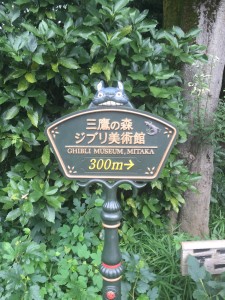
In both cases, a minor complaint seemed to give the impression that I thought badly of whatever I had been talking about. However, I had just been frankly explaining little issues I faced during experiences that I greatly enjoyed. I think this problem arises from the difference in directness between Japanese and American styles of communication. If I had mentioned similar complaints in the US, I think I would have gotten a response similar to “That’s too bad, but everything else was fine, right?” In Japan, since negative responses are usually shown indirectly, explicitly stating that I encountered problems might suggested that I was rather upset. I know that complaints are often viewed as constructive in American culture, as they offer a chance to find room for improvement, but I learned from these conversations that I should be more careful and hold my complaints when communicating in Japan.
Question of the Week
While I learned a little about how to deal with complaints, these were only two conversations I had within my lab and am curious to learn more about what Japanese people think of complaining. During the Pre-Departure and Tokyo orientations, we have spoken much about indirect communication and complaints regarding people, but what about general complaints? Are they considered rude? Should one refrain from mentioning minor complaints even when asked about worries or troubles?
- This might be an interesting question to discuss with a Japanese student currently studying at UT Austin as they may have a better sense of what you mean by this question, in particular the differences in how to complain or voice concerns in the U.S. vs. Japan. Your host professor and mentor’s reaction to your slightly negative statements may have more to do with the guest/wrapping culture and wanting to ensure that the student they are hosting have good experiences while in Japan. You are probably on to something that when voicing concerns/complaints it is better to use more indirect language. This is where the use of “Hmm… well, perhaps my weekend trip might have been better if I had planned better and not missed my train. I had to wait an hour for the next one but that was okay because…”. In general, in Japanese answers to questions usually are longer/use more words because this is needed to be indirect. That is hard to do when speaking in English though since our language is structured to facilitate direct and concise answers to questions.
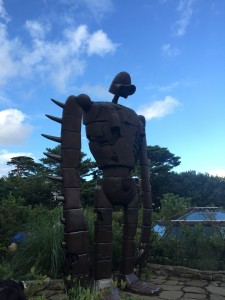
Research Project Update
As foreshadowed in last week’s report, the helium pump was still broken on Monday and the bolometer seemed to have broken down as well. It would still be one week before Otsuji-sensei returned, so I spent most of the week gathering all the data I did manage to get in order to later present it to Otsuji-sensei while asking for his advice. That meant the week consisted mostly of plotting graphs and putting together most of my poster except for the “Results” section. Most likely, I will use results obtained from emission experiments conducted during my first week at the lab. Back then, I had only just started studying graphene and the theory behind the emission setup, so I did not have a good grasp for what the exact process was as we gathered the data. However, I now understand set up more thoroughly, and it seems that I will be able to have some interesting data for my research project. The only repercussion, then, of everything breaking down is that the research process is now a little backwards, since I performed the experiment and got results, and then did the required studying to understand what those results meant. Still, I am certainly glad I have some results show even with equipment issues. There is also a chance we might be able to perform one more detection experiment on the last sample, but we should wait for Otsuji-sensei’s opinion, since he might want to save the sample for more interesting emission experiments in later months.
Return to Top
Week 12: Final Week at Research Lab
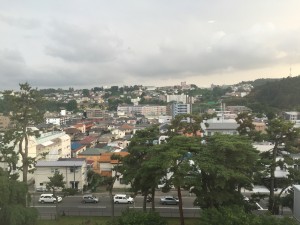
One aspect of that has changed about my view toward Japanese culture is my understanding of the way the Japanese follow rules. Since there is such a great emphasis on kata and doing things the proper way, I thought that rules would always be followed very rigidly. However, I have seen that people are willing to make exceptions. For example, in my previous report about the last minute shinkansen, I was allowed to cross the gate without a ticket (and that is not the only time the JR staff made an exception for me when I was in a rush). I think Japan has a unique combination of rule-following and friendliness that I have not experienced in any of the other countries I have been to. Upon returning the US I experienced reverse culture shock with direct communication. Arriving and the airport and returning to the hotel, the strangers we passed by seemed rather rude. However, I realized that I had just gotten used to Japanese politeness, kindness, and indirectness. Even though we had spoken about American direct communication previously during the pre-departure orientation, it only hit me now how strong direct communication is as an aspect of American culture.
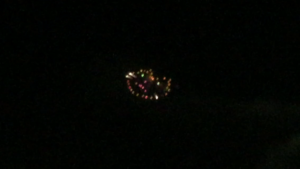
I think I have grown during my three months in Japan. The biggest way I have changed is in my willingness to travel and explore on my own. During the first few days in Tokyo I mostly relied on the others in the group to lead the way during our free time, or just followed along during the scheduled events. However, since my first time being completely alone in Akihabara, and then especially after my first completely solo trip to Hakone, I realized that it is not so hard for me to travel on my own, even in a foreign country. Since then, I have taken many trips to different towns all over Japan. It was not always easy, as I made several mistakes and caught many last minute trains, but thankfully there were never any serious problems beyond that, and each trip was certainly worth it.
I had two main recurring frustrations. The first was the amount of living space. This is something I wrote about all the way back in my first report, and since then I have gotten more used to it, but still easily prefer the wider spaces found more commonly in the US. It was never a big issue, but the moments where I had to crawl over suitcases and boxes to get to my desk were some of the very few moments where I counted the weeks left before my return. The second frustration does not have much to do with Japan but more with myself, and it is how often I had to sprint to catch subways and trains. The Saturday morning jog from Urban Castle to the subway station eventually became part of the routine. I could say that this is a result of everything always being exactly on time in Japan, but I honestly think it is caused more by my Egyptian inclination to be late all the time.
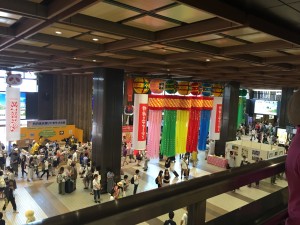
It may seem strange to say this now, but one of the things I will miss most is how everything was on time. Yes, it partially caused me to sprint much more than I had to, but it also let people accurately know exactly when something was to start or end. It was a refreshing change from American and especially Egyptian lateness to see events begin right on time or to arrive at a destination exactly as scheduled. What I will miss even more is how polite people are in Japan. Whether it is policemen, convenience store clerks, station staff, or random passersby, an overwhelming majority of the strangers I encountered were so friendly and helpful. I got to experience the wonders of asking for directions in Japan and met four different people who all helped me find the way. The first man was not so sure, so he asked a woman who worked in a store nearby, and she pulled out a map on her phone to show me the way. When I got to the place she was talking about, I still could not find what I was looking for, so I asked for help in a nearby flower shop. They did a lot of searching for the name on the phones but could not find the exact building. Then I mentioned that I was looking for trading cards and one of the clerks yelled “chotto matte” and ran out of the store. She came back after a couple minutes saying that she had found it and walked me all the way over. This is just one example of the kindness so many complete strangers have shown me during this last three months. One other aspect I will miss is the feeling of safety. If I needed to, I could make trips to a convenience store late at night, or search for my hotel without worry in new cities I had never been to before. It is rare to find that kind of comfort and freedom to explore around the US or in Cairo. Finally, what I will miss the most is my lab mates. It was a lot of fun working with them every day and traveling together during weekends. The other students and my professor were all so friendly and welcoming, making for an environment I will truly miss as I leave Sendai and Japan.
On Monday of my last week in Sendai, my lab threw a going away party and all of the students attended. On Thursday Otsuji-sensei said goodbye since he would not be in lab the next day. On Friday, some of my lab mates took me to see the street stalls that were up for Tanabata in Sendai, and then we watched the fireworks. We then played Super Smash Bros. on one of the lab member’s Wii very late into the night. Before I left, I gave each one of them a thank you note. I did not anticipate writing notes for every single one of my lab mates when I had brought the cards from the US, but fortunately I had exactly enough. They also gave me a very nice note with smaller notes and messages from all the lab members. I had to leave my bike behind to return it to Otsuji-sensei, so I walked back to Urban Castle, and one of my lab mates walked all the way back with me. We said goodbye one more time, and then I proceeded to pack my bags and prepare for the trip to Fuji.
After my time at the lab, I am now more strongly considering pursuing a PhD or research as a profession. I felt how exciting it can be to make new discoveries or conduct experiments with cutting edge technology. I am still not completely sure of a concrete plan, but I will continue to look for more research positions as an undergraduate to help me eventually make a decision. My research project ended early in a way, since all the equipment broke down, so I spent the last week wrapping up my poster and plotting the last sets of data and graphs. I plan to remain in contact with my lab mates mostly through email. I hope to send my professor an email, perhaps every semester to let him know how I am doing and what progress I have made in my major. I am not sure if I will continue research on a similar project since my current plan is to focus more on embedded systems and integrated circuits than nanotechnology. Still, I am definitely curious to know what the results will be in future experiments, so I hope to ask my mentor for updates every once in a while.
For my final weekend in Japan I am planning on climbing Mount Fuji with Haihao. We hope to see the Tanabata festival in Sendai before making our trip to the mountain and, if possible, to meet up with the rest of the group at the summit and climb back down together. Haihao and I decided to climb the Subashiri trail, which is both the second most popular route from Tokyo and the second hardest route to climb.
Question of the Week
With so many people being so polite, are manners something explicitly emphasized for younger children in schools? In the US children often do things that would be considered rude if done by an adult, but fine for children since “they do not know any better.” Is this also the case for children in Japan, or are manners strongly emphasized from very early on?
- Yes, there are some distinct differences between education in the U.S. vs. in Japan. Japan actually places a strong emphasis on the role education provides in teaching children ‘moral behavior’. This is an explicit role of education and guidelines on this are issued by MEXT. The following videos and articles might also be interesting for you to review:
- Japan: Teaching Respect and Manners (Video)
- Lessons from Japan (Video)
- School Lunch in Japan: It’s Not Just About Eating (Video)
- Japan Student Clean Classrooms to Learn Life Skills (Video)
- Resources for U.S. Students: Life in Japan – Education
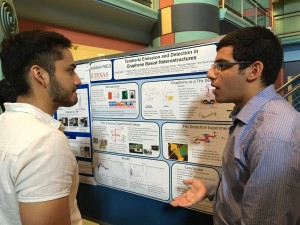
Final Research Project Overview
Research Project Abstract and Poster: Terahertz Emission and Detection in Graphene Based Heterostructures ![]()
Host Lab in Japan: Otsuji Lab, Tohoku University
Host: Prof. Taiichi Otsuji
Mentors: Deepika Yadav, Junki Mitsushio
Introduction: Terahertz waves have many potential uses for medical imaging, ultrafast communication, biological and chemical research, and more. However it is currently very difficult to achieve terahertz emission or detection with today’s technology. We have devices that can operate in lower and higher frequencies, but not terahertz. However, graphene is one material that has the ability to emit and detect terahertz. Therefore, for this project, we studied single-mode emission and broadband detection in graphene based transistors working toward the creation of the first graphene-based terahertz laser and terahertz detector.
Approach: We conducted two separate experiments: one for terahertz emission and one for detection. For the emission experiment we used a distributed-feedback dual-gate graphene-channel field-effect transistor (DFB-DG-GFET) and for detection an asymmetrical dual-grated-gate graphene field-effect transistor (ADGG-GFET). For emission, we excited the transistor’s carriers by current injection, and then left the carriers to recombine to emit terahertz. We used a bolometer as part of a Fourier transform infrared (FT-IR) spectroscopy setup to detect the emitted terahertz. For detection, we used a uni-traveling carrier photodiode as a terahertz source and then shined the terahertz beam on the graphene sample. The transistor was connected a lock-in amplifier that would show the transistor’s current, and we looked for an increase in current as a sign of terahertz detection.
Results: For the emission experiment, we were able to see terahertz emission that increased with increasing bias voltage. In the end we had two sets of data. Both showed increasing terahertz emission; however, the first showed emission that increased with time regardless of how the bias voltage changed, and the second showed emission that increased as the bias voltage increased, but decreased when the bias voltage was set to zero. For the second sample, there was a wide emission intensity peak in the range of four to six terahertz. For detection, no current was seen from the sample, meaning the experiment produced no results.
Discussion: The first sample in the emission experiment increased with time, unaffected by the change in bias voltage, meaning its detected emission was only thermal radiation and not terahertz emission caused by current injection. However, since the second sample could be controlled by the bias voltage, the results show that it did, if fact, produce controlled terahertz emission. Since the peak was wide, the sample did not produce single-mode emission as we had aimed for, but the wide peak did surround the target emission frequency of five terahertz.
Future Research: Since we saw terahertz emission with a wide peak, one aim of future research will be to modify the sample’s feedback structure to focus emission at just a single frequency. Getting single-mode emission will be crucial for building a graphene sample that could be used for the first graphene-based terahertz laser. Additionally, we will need to continue modifying the ADGG-GFET for better terahertz detection, since we were unable to see any signs of detection in this experiment.
Conclusion: We were able to see terahertz emission caused by current injection in a graphene transistor. These results show the sample’s potential for graphene-based terahertz lasing. We will continue to modify the samples’ structures for both emission and detection, working toward single-mode emission and broadband detection from graphene based transistors.
Week 13: Final Report
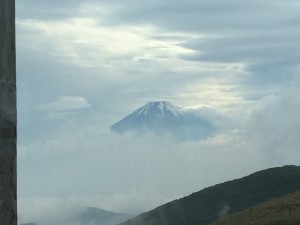
During the Re-Entry Program we spent one day preparing for our poster presentations, another day learning how to best describe our new experiences when applying to graduate school or future internships, and the third day presenting our research at the SCI Colloquium. On the last day we visited NASA with the Japanese students and attended a party to say goodbye to the Nakatani RIES staff in the US and welcome the Japanese fellows. The Re-Entry Program schedule was certainly much more relaxed than any of the other schedules we had gone through, which was great since we had all been very jetlagged and were ready to go home. The first day’s workshop was very helpful for preparing us for the colloquium on Friday. I had never attended a poster session before and was not exactly sure how to go about presenting my research, but after the workshop I felt ready. The next day’s advice was also helpful, since we were told exactly what points were best to highlight when explaining our Japan experience in the future. The colloquium was fun since I got to explain what I had learned in the previous two months, and it felt good to be able to answer people’s questions when I had come into the program knowing nothing about terahertz and very little about semiconductor physics. NASA was also very fun, with the most exciting part being the visit to Mission Control. During the trip to NASA and on the way back I got to spend most of the ride talking with Japanese students. I told them about all the places I visited in Japan and answered some of their questions about the US. I also spent a good portion of the party talking with the Japanese students, giving them some advice about doing research.
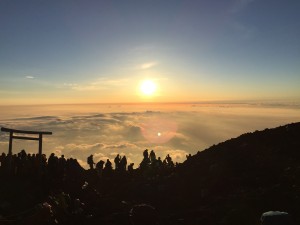
When speaking to a family member, I would say I learned how to get around on my own and be curious about the world around me. I live alone in Austin, but I rarely leave campus and have not yet seen what the city really has to offer. In Japan I explored more than a dozen different cities on foot, by bus, subway, train, tram and shinkensen. This was the first time I had to plan entire trips on my own come up with solutions when not everything went according to plan. I would also emphasize how much I learned about Japanese culture. Intentionally or unintentionally, I have made sure my whole family knows of my interest in Japanese culture, and it is important to them and to me that I was able to spend three months living in the culture and learn about the subtleties one could not understand just by studying from the US.
When speaking to a professor I would discuss the new scientific and electrical engineering knowledge I gained. Semiconductor physics is one topic I will need to study as an electrical engineering major, and my summer experience not only taught me about this subject, but let me do graduate level work in cutting edge experiments within the field. I had the opportunity to study topics such as graphene and terahertz spectroscopy in greater depth than most undergraduates would through conventional classroom studies. Additionally, I learned about the research process and how patient one must be when conducting experiments with equipment malfunctions or unsatisfactory results.
When speaking to an employer, I would highlight how I learned to adapt to a new culture and the many skills that came from it. During my time in Japan I faced many challenging but educational situations that stemmed from the language barrier or minor cultural misunderstandings, but was able to learn from my experiences to make life in Japan smoother and easier every day. Because of these challenges, I learned how to think on my feet in difficult situations and work through cultural differences, which is becoming increasingly important in our globalizing society. I also gained ambiguity tolerance, since this was the first I lived in a country where I had no skill in the primary language. Even without being completely sure of what the situation was all the time, I had to simply observe others and do as they did, or, if I needed to act fast, to stay calm in move toward what I thought was the best solution based on the facts I did manage to gather.
When speaking to a student, I would again highlight the fact I was able to do graduate level research as an undergraduate. Since it is difficult to get research experience like this as an undergraduate, this program is helpful for showing younger students what research is like, aiding in the decision of whether to pursue research or industry. I would also mention the cultural aspect, since getting to spend three weeks focusing on language and culture both gave us a great deal of new information, but also a special cultural lens we could use to make many observations on our own while we lived in our host cities.
One concrete change I am planning on pursuing this semester is to join the Japanese language tables at my university. These are sessions where native Japanese speakers meet and chat with native English speakers so that both sides can practice a foreign language. I had heard of these tables before, but since I had zero experience in Japanese I never tried visiting. Now that I know just little, I will try them out and can hopefully continue to improve my Japanese. My level of Japanese might not even be enough to hold a conversation, but from the program I also learned that it is important to try to speak Japanese as much as I can even if it is very difficult at first, and it will hopefully become easier with improvement. The program has also encouraged me to be more active about research. I would like to ask more questions about my research to understand all the different aspects of our project beyond just my individual contributions. I am also more curious to ask my own professors about the kind of research they do and to learn more about different areas of research within the field of electrical engineering.
Final Question of the Week
In many group and personal conversations, it was mentioned that the younger generation is breaking away from the ways of the older generation. Similar trends happen all around the world, including the US. As a result, how has the culture changed in Japan over the years, and how do Japanese people think the culture will change in the future?
- Very good question and I think you would get many different answers depending on who you ask and what age/generation they are (just as you would if you asked the same question in the U.S.). My suggestion is to talk about this topic with some of the students you meet at the Japanese language table. I’m sure it would be a lively discussion and you’d probably get some insights that you might not get from just looking online. Here are a few articles on this topic:
Follow-on Project
During this coming semester and the beginning of next semester, I hope to host an information session and setup tables at the various study abroad fairs hosted by the University of Texas, Austin. During the information session, I would give a broad overview of what the Nakatani RIES program is, explaining the cultural and research aspects and the general program schedule. I would then explain the entire program in more detail in chronological order, starting by explaining how the pre-departure orientation gives students a helpful cultural lens for visiting Japan. Next, I would explain the orientation in Tokyo and then my research in Sendai. I would also touch on the other students’ research experiences based on what I heard from them throughout the summer and at the poster presentations. Before wrapping up with the many benefits the program provides, I hope to explain the opportunity for individual exploration and mention some of the different places I visited during my free time. Most of the study abroad information sessions I hear about are hosted by the School of Engineering, and explain opportunities just for engineering students. While great for reaching out to engineering students, there might be many potentially interested natural science majors who would miss out on such an information session. I will see if there is a way to let the College of Natural Science know about the information session, or I would host two separate sessions: one for engineering students and one for natural science students. There are also several study abroad fairs throughout the year, both for the entire university and just for the School of Engineering. I hope to host a table at these fairs to let people know about the program and answer any questions they might have.
Return to Top
Tips for Future Participants
Pre Departure Tips: Plan out some sights you might like to see ahead of time. That way you won’t waste potential sight-seeing time deciding on what to do. The japan-guide.com website is excellent for making a list of great things to see. For packing, I followed the advice on the Nakatani Pre-Departure Resources page and was fine.
Orientation Program Tips: Get lots of sleep and make sure you are well rested. All day you will be exposed to helpful lectures that will not be as beneficial if you are tired and cannot pay attention. The Japanese classes might be the only scheduled time you get that is dedicated to learning Japanese, and the science lectures provide a great basis for the research internship, especially if you are going to a lab that does anything related to terahertz, graphene, or carbon nanotubes. Since the Tokyo schedule is busy, it will be tiring, and there are plenty fun things to see and do in Tokyo, so just be sure to fit a good amount of sleep into your schedule.
Mid-Program Meeting Tips: Take advantage of the Mid-Program Meeting to show what you have learned or accomplished at the lab. If you are in the Otsuji-lab, then by the time of the Mid-Program Meeting you might have just gained some fundamental background knowledge and not done much experimental work, but still speak confidently about all the interesting things you have learned and what gets you excited about the work you are hoping to do or have already done.
Working with Your Research Lab Tips: Ask a lot of questions. Try to understand everything about your research project from early on. This might be difficult because you do not yet have the required background knowledge, or your professor may not yet have decided on a project; however, if something is unclear, whether it is a theory or an experimental process, and you cannot t resolve it on your own, be sure to ask about it, even if you think you may have gotten the explanation before.
Living in your Research Host City: If you are at the Otsuji-lab, you might be given a bike as I was, and I would recommend using it to get around instead of the subway. If you are going from Urban Castle to Sendai Station, by bike and by subway take a similar amount of time, but with the bike you get to see more of the city and save some money.
Within Sendai, you can explore the downtown area near Sendai Station (where there are a lot of great shops that sell anime merchandise), Ichibancho shopping arcade, and the Date Masamune statue at the site of Sendai Castle. Thanks to Haihao, I can recommend going to Sendai Castle Saturday afternoon to catch a fun show (if they are still doing that in future years). Near Sendai, I highly recommend visiting Matsuhima Bay and Yamadera. Don’t be afraid to ask your lab mates if they would like to visit either of these places with you, as it makes the trip a lot more fun! The last nearby place I would recommend is Mount Zao. It is a bit of a hassle to get there by public transportation, but definitely worth it. Check all the train and bus timetables ahead of time so that you don’t have to do a lot of waiting at the stations.
Language Study Tips: I will reemphasize from the Nakatani Japanese Language website pages how helpful it is to learn the hiragana and katakana. While there is a lot of kanji in Japan, hiragana and katakana come up frequently enough that I found memorizing them to be absolutely worth it. Especially since the katakana are used for borrowed words (usually English words), if you can read katakana then you will be able to read and understand certain signs and labels. This was especially helpful for buying food whenever the labels were written in hiragana or katakana. For kanji, I would recommended learning them while you are there. If you see any kanji that repeatedly comes up, write it down or take a picture and learn what it means. The learning will be slow, but it can still be helpful to learn the most common ones.
For the classes, as I wrote before, be well rested to truly take advantage of the class. Some of the grammar rules can be hard to remember, so it is worth putting extra time into studying them when you can during those first three weeks.
What Gifts to Bring: Big boxes or bags of chocolate or candy. Try something that is not too sweet, since Japanese candy is much less sweet than American candy. At the Otsuji Lab, there are two main rooms, so two big boxes or bags (one for each room) is usually good. An additional gift from your school souvenir shop for your professor and secretary would also be nice. Your mentor will also likely put a lot of time and effort into helping you during your internship, so it might be nice to get an additional gift for him or her and present it at the end of your stay.
What to Eat: Ramen was my favorite day to day food. Also, Osaka food is especially great; be sure to get kushikatsu if you are there. I also encourage being adventurous at 7/11 and other kombinis, especially with the various breads. Mellonpan, tsubuanpan, and tamagomushipan are all amazing.
What to Buy in Japan: Lots of anime merchandise (posters, t-shirts, CDs, etc.). The best places for this kind of stuff are in Akihabara in Tokyo and Nipponbashi in Osaka. There’s also plenty of stores in Sendai too, like Animate and Gee Store.
What to Do in Japan: Do lots of traveling and sightseeing. There are countless interesting places to see, each one different from the next, making them all worth visiting. I definitely recommend getting a JR pass for all of Japan, or a regional pass for Eastern Japan if you are in Sendai, depending on where you want to visit and when. If you like Japanese music, I highly recommend going to concerts. Buying tickets can be difficult since the websites are entirely in Japanese, but you can get help from your lab mates or Google Translate. Finally, you should try karaoke. Even if you would never do karaoke in the US, I think it’s worth giving a try in Japan.
Places to Visit in Japan: In Tokyo, if you like anime, visit the Suginami Animation Museum. If you like Shonen Jump, visit J-World in Ikebukuro. The Pokemon Center is also there if you like that. The Ghibli museum is also fantastic, just be sure to buy tickets early. Near Tokyo, Lake Ashi in Hakone is a beautiful place to visit. As mentioned above, Matushima Bay, Yamadera, and Mount Zao are all great places to enjoy nature near Sendai, with Mount Zao being my favorite. Farther away, Osaka is a fun place to spend a weekend. If you go to Osaka, I would also recommend seeing Himeji Castle which is relatively nearby. If you do the Mid-Program Meeting in Kyoto, I recommend going early and visiting Nara, and also visiting Nijo Castle and the Manga Museum if you can. I visited many different places, but these were my favorite. You should also ask your lab mates for recommendations, and they might take you to places you would not have been able to find on your own.
